Short essay on Pakistani Wedding
A Pakistani wedding is a traditional ceremony which rejoices on the wedlock of a bride and groom. It brings together the families of the bride and groom in the many occasions that take place. In Pakistan the wedding ceremony is of immense importance. Various cultures have distinct ways of celebrating the wedlock of two individuals through different traditions. Pakistan being a Muslim country situated in South Asia and the greater Middle East has a vibrant culture with many customs. A Pakistani wedding is a festive arrangement, with a lot of fun. It is a celebration that is looked forward to by everyone; there are many pre wedding customs and rituals. Many of the customs that are practiced in Pakistan have no roots to Islam and these customs have been embraced from ceremonies and traditions of the Hindu culture.
The first custom is known as a mangni which is actually an engagement ceremony, marks the official engagement of the couple. This is a small ceremony takes place in front of few family members of the would- be bride and groom. Prayer and blessings are recited and the wedding date is determined. The next ceremony is the Mayun it is a custom where the bride enters a state of isolation for 8 to 15 days prior to the wedding, she is free from doing all chores and running errands and the bride and groom are not allowed to see each other, in fact the bride can’t even leave her house. This is when the beautification rituals begin. Uptan is the next small event in which a paste is formed using turmeric, sandalwood powder, herbs and oils, which the groom’s mother brings for the bride. She blesses the bride and applies the uptan – mixture on her face and hands. The uptan ceremony is also held for the groom, in fact uptan is supposed to make the bride look pretty and she applies it daily until the wedding.
The Dolki is a singing ceremony and traditional wedding songs are sung accompanied by two or three instruments, a dolki being the primary instrument. In these events the bride is officially treated as a bride or a dulhan, she wears a traditional Pakistani yellow outfit and her siblings and friends escort her to the event. The mehendi is actualluy a hena party which takes place before the wedding. It’s a ceremony consisting primarily of females, they apply henna on the bride and each other, they sing and dance and sadka is performed on the bride- that is they ward off evil from the bride. After the ceremony there is dinner, and traditionally the bride veils her face in the ceremony. Mehendi is done on the groom’s side as well, with the groom, the bride does not participate.
The Baraat and Nikah usually happen together or one after the other. It is the official ceremony of the wedding; it is when the grooms family and relatives or friends make way to the bride’s home. They are warmly welcomed. It is there that they share juices and foods and meet and greet each other. This mainly happens in the baraat. The nikah is the purely Islamic ritual, it is attended by only close members, men and women are seated separately. The nikah nama contains certain terms and conditions which are written and agreed upon by both the parties. The next ceremony is the ruksati in which the bride fare wells to her family and is taken to her in laws house. The last ceremony is the Valima which is more like a wedding reception. Hence Pakistani weddings are extensive consisting of many rituals and customs, thus they are colorful and amusing for all.
Related Articles:
- 500 words essay on a Wedding in the Family
- How to write Engagement or Wedding Invitation Letter?
- Short essay on Pakistani Culture
- Write a letter to your foreign friend to describing about Indian marriage

What Makes Pakistani Wedding Traditions So Unique
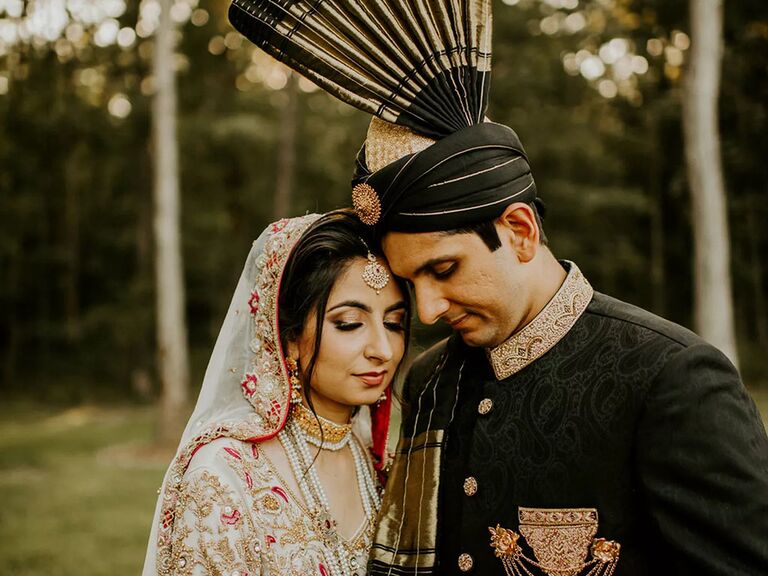
- Ariel writes on a variety of wedding-related topics for The Knot.
- She has previously worked for Southern Bride Magazine, Miss Design Berry and other woman-owned wedding brands.
- She received her Bachelor of Arts in English from the University of Memphis.
While most Western wedding ceremonies last a day or two, weddings in Pakistan can last up to ten days. Typical Pakistani wedding traditions involve religious rituals and ceremonial celebrations, and these marriage events include beautiful colors, lively music, and extravagance. Like so many other cultures around the world , Pakistani weddings celebrate the union of two families with fervor and glee. Let's look at some of the ways couples from Pakistani backgrounds tie the knot.
A Brief History of Pakistani Wedding Traditions
Throughout Pakistan's history, wedding customs have shifted in small ways and remained the same in others. When Pakistan was partitioned from India in 1947, they began to create their own traditions while taking inspiration from Indian ceremonies, making for unique wedding practices shared by the people of both countries.
Pakistani Prewedding Traditions
For Pakistani couples, the pre-wedding celebrations are just as important as the ceremony itself. First is the Dholki, a pre-celebration that takes place about one to two weeks before the main celebrations. This is where the bridal party, close friends and family members of the engaged couple will sing and dance traditionally while beating on a dholak drum.
The night before the main ceremony is the mehndi , or henna night. This is when the bride has intricate henna patterns drawn onto her hands and feet to symbolize luck, joy and love. Sometimes the groom's name is hidden amongst the intricate detail. In recent years, the groom has also become involved in this day, where his loved ones will apply oil to his head. These celebrations also include music and dancing.
Another common ritual is the baraat or barat. It's a cheerful wedding procession for the groom with live music, such as a dhol, and dancing as the groom is placed on a ceremonial horse. His guests will then dance in front of him on this procession.
Pakistani Wedding Attire
Instead of wedding dresses, Pakistani brides traditionally wear an embroidered brightly colored shalwar kameez, sari or lehenga. The groom wears a casual black or white shalwar qameez, sherwani or a Western suit. Their attire is usually extravagant and elegant, with intricate beading and embellishments that are woven into the fabric. Brides may wear red, as it's a color that symbolizes love and passion.
Find your kind of venue
Wedding guest attire.
For ladies attending these wedding events, you can wear a colorful, elaborate fabric draped across the body from shoulders to ankles known as a saree, or a lehenga which is a long embellished skirt and top with a scarf or dupatta. Men can wear a sherwani, which is like a long jacket with trousers.
Pakistani Wedding Ceremony Traditions
Arguably the most important part of the marriage ceremony is the Nikah or Nikkah. This is the formal ritual where the bride and groom exchange vows and make promises to one another. But before the couple is even allowed to see each other at the Nikah, a Mehr (symbolic presentation of gifts or money) is given to the bride by the groom.
During the Nikah, the couple might perform the Munh Dikhai. This is where the bride and groom will look at each other in the mirror while wearing an embroidered shawl over their heads, also called the "showing of the face." After the Munh Dikhai, the two will then help each other taste honey as a symbol of their marriage's sweetness.
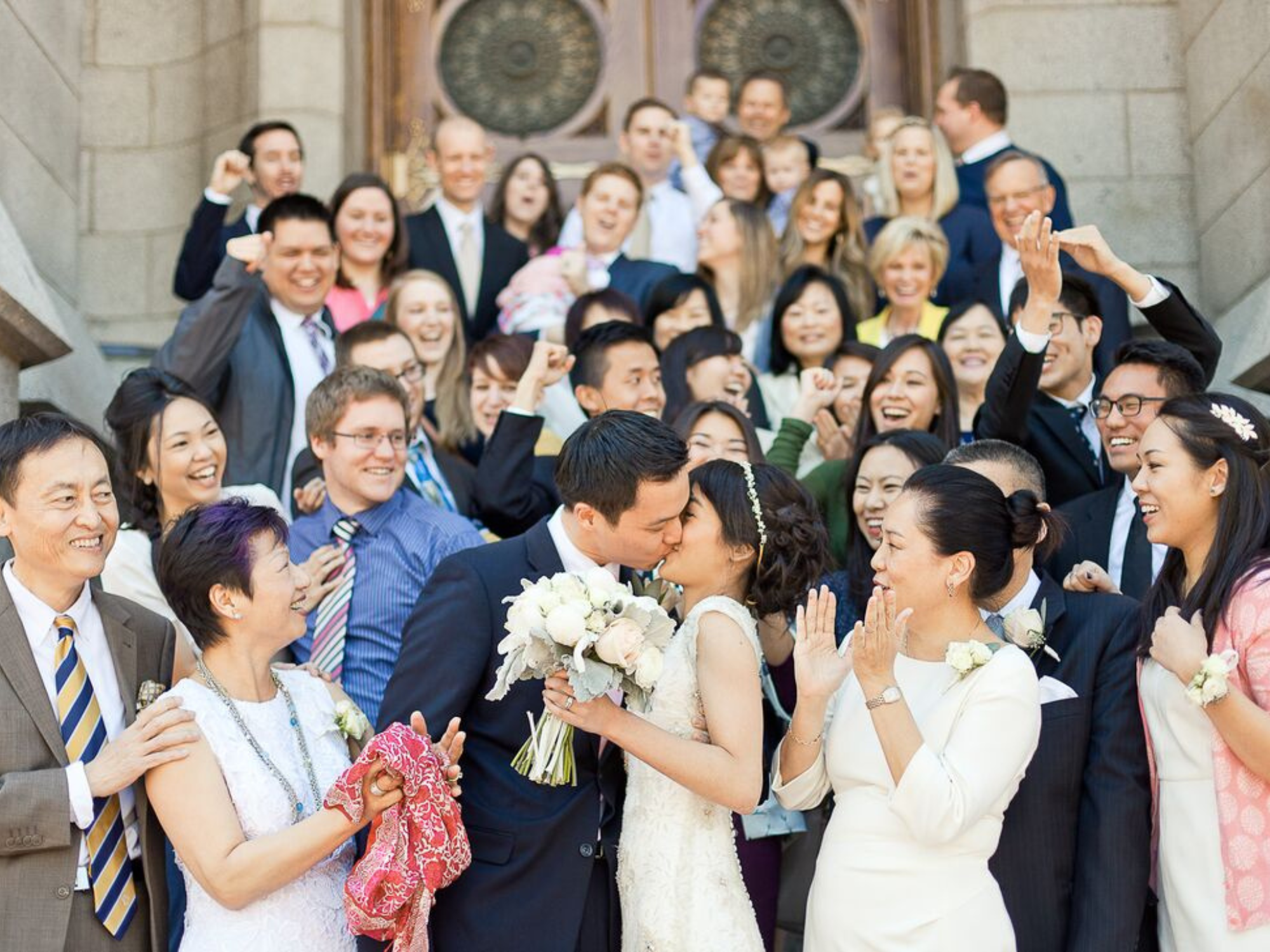
Once the ceremonies and their traditions are finished, the marriage contract can be signed along with two male witnesses. The newlyweds will repeat "qubool hai", or "I accept", three times to make their marriage final.
Pakistani Wedding Reception Traditions
A Pakistani wedding reception is called the Walima or Valima and it comes after the Nikah ceremony. This dinner is usually organized by the groom's family once the marriage has been made official, and it celebrates the union of the two newlyweds and their families. Wedding reception attire for the groom may include a formal suit or tuxedo, and the bride will wear a dazzling dress with gold jewelry provided by her new husband. Many guests and close relatives attend this reception, a huge celebration full of music, dancing, and food. The reception venue plays a big part in the big day, often including extravagant decorations, lighting, and florals.
The reception is preceded by the Rukhsati or "sending off" where the groom and bride leave the wedding venue together with the elders of the family.
Pakistani Traditional Wedding Food, Drinks & Desserts
Halal meat, or meat prepared according to Islamic law, will be served as part of Pakistani wedding traditions. Pakistani cuisine is rich in its flavors, and you can expect delicious, traditional dishes such as tikka, kebabs or street-style food counters. Other options may include chicken yakhni biryani, nihari gosht or haleem served with naan bread or ghee rice. Typical Pakistani desserts include gajar ka halwa, Kheer and Zarda.
There is also the mehndi ki rasam, where the bride is brought forward by her family and sits with her face veiled. Her close family relatives will then apply mehndi to her hands and feed her sweets such as mithai or M&M's.
Pakistani Postwedding Traditions
As in most cultures, Pakistani weddings are followed by a honeymoon. Here it's called a Shab-i-Zifaf, and it refers to the couple's first night together. On the wedding day, the couple's bedroom is decorated with flowers, such as roses or rose petals on the bed, and garlands or strings of roses as bed curtains. The bride's family will lead her to the bedroom where she has a veil or head covering (dupatta or chador) and she will wait for the groom, who is staying with his relatives. Once their families have left, the groom will enter to brush the bride's veil aside to reveal her face. He may also offer his new wife a small token of affection like a ring or heirloom.
On the fourth day after the wedding, it is traditional for the bride's parents to host a dinner called chauthi. This is for the groom's immediate family, and it can involve a lavish dinner and fun traditions like joota chupai, a game of "stealing" and hiding the groom's shoes.
Frequently Asked Questions About Pakistani Wedding Traditions
What are some other frequently asked questions about Pakistani traditional weddings? Here's what you need to know.
What is the typical cost of a Pakistani wedding?
Pakistani weddings are typically lavish and have a lot of guests, sometimes between 500 to 1000 people. The bride's father is the one who would pay, and this can cost around $18,000 to $22,000.
What are traditional Pakistani wedding gifts?
As with any wedding, it depends on what the couple wants or needs. Some Pakistani newlyweds will prefer decoration pieces or crockery items to help set up for their new life, but perfumes, watches or cash are also common gifts.

- Georgette Fabric
- Crape Fabric
- Occasion Dresses
- Casual Dresses
- Sharara Dresses
- Anarkali Dresses
- Kids Clothes One place to shop for all your Pakistani kids clothes. Yes, Libas e Jamila is a hub of childrens Pakistani clothes UK. You will find amazing and cute outfits for kids of all ages. Whether it’s a boy or a girl, you name it and we have it. Our wide range of Pakistani kids clothing is enough for you to choose both western and eastern wear for your children. Everyone knows how hard it is to go out for shopping with kids. You have your hands full at all times and you end up buying stuff you don’t really need. Set aside all that stress of going shopping with your kids and visit our online kids clothes shop. We have everything from Pakistani kids clothes to Indian kids dress. You will never have to leave the comfort of your house to buy necessary clothes for your kids. We have everything for you right in one place and that is the palm of your hand. Not just boys’ clothes but you will find such beautiful Pakistani girls dresses and traditional Indian girls dresses as well. Be it western wear or casual clothing, girls clothes for eid or formal dresses for parties…
- Ready Made Suits Are you looking for ready make suits UK? Then you are definitely in the right place. Libas e Jamila is offering you the best deals of ready made suits Indian and Pakistani that you will not find anywhere else in the UK. Our ready to wear outfits are tailored to perfection just for you. From the finest fabric to the most beautiful and latest designs, we handpick everything to give you the best products. Whether you are looking for ready made suits Pakistani or Indian, do not worry because we will take care of all your needs. Go through the biggest collection of ready to wear Pakistani UK collection at our online store anytime. From traditional ethnic to modern chic designs, our stock of readymade suits will not disappoint you. Who needs a hectic shopping trip where you can’t find any outfit that fits your mood? At Libas e Jamila online store you can shop freely without any added stress. Our ready made suits Pakistani UK are available in all sizes that you can easily choose from. There are many designs available so that you are able to find the perfect outfit to fit your mood. We make sure that each dress…
- Kaptaan Peshawari Chappal
- Womens Kurti
- Saree Dresses
- Banarsi Dresses
- Pashmina Shalwar kameez
The Traditions of Pakistani Wedding | Libas e Jamila
- Uncategorized
Last Updated on November 13, 2021 by Farheen Junaid
The traditions of Pakistani weddings go way back and link to the customs and culture of the Indian subcontinent. These traditions were bought into South Asia by the Mughals. As it is linked to the culture of the royal Mughals, there is a certain royalty to how a wedding in Pakistan takes place. And not just in Pakistan, a British Pakistani wedding takes place with as much grandness as any other wedding in the South Asian region.
A Pakistani wedding consist of different events combined together in week-long celebrations. There is so much happening that you can easily get lost in the festivities and totally forget about your mundane routine. Which makes it very hard to get back to your daily life after that much fun and excitement.
Pakistani Bride a centre of attention on a Pakistani Wedding
Pakistani weddings are all about a number of events and fun. The first thing comes on the priority list of a wedding is the Pakistani bridal outfit. Where all other people are busy deciding their dresses for a wedding the Pakistani bride is most concerned about her bridal outfit. Everyone at a Pakistani wedding are looking forward to the attire of the groom and the bride. So the Pakistani bridal carries all the attention and that’s why the most concerned thing on a wedding is the Pakistani bridal outfit.
The heavy embroidery and colour schemes all are important and every Pakistani bride wants to look the most beautiful on her Pakistani wedding.
Let us walk you through a grand Pakistani wedding traditions in detail and you can decide for yourself how lively and vibrant these events can be.
The Dholki Tradition
A couple days before the actual Pakistani wedding events start, the close family and friends of the bride and groom get together to enjoy an event called a dholki. Close family members who live out of town comes with their bags packed to the bride and groom’s homes and stays there for the rest of the wedding and enjoy the dholki functions together.
During this small function, all the people gather around in a circle on a floor decorated with rugs and cushions and sing traditional Pakistani wedding songs on the beat of a dholak. The grandmother bless the groom and bride with their prayers and also sing some old songs on the tap of dholak. Dholak is basically an instrument that looks like a two-headed hand drum. One of the women plays the dholak while the others sing and clap.
A dholki is a traditional part of a Pakistani wedding that involves a lot of relaxed fun for the close family and friends of the couple. Dholki events are usually separate for the bride and groom and take place in their respective houses. With the passage of time lives are getting busier and due to the hustle bustle the trend of dholkis is becoming less like only one or two or maximum one week of dholkis are celebrated.
Mayun Tradition in Pakistani Wedding
A Mayun is considered an important part of a traditional Pakistani wedding and is taken very seriously in some parts of the country more than others. Mayun happens a few days before the wedding, where female family members, cousins, and friends gather around the bride and perform some rituals. These include putting oil in the bride’s hair and ubtan on her face, arms, and feet. These are some of the beautiful traditions of Pakistani weddings made by our ancestors. Even today all of these traditions are assured by our grandmothers and other elder ladies of the family to be followed properly.
These rituals basically represent the preparation of a bride for her wedding day and it is said to enhance her beauty. A main part of the Mayun is that the bride is then not allowed to leave the house as it is considered a bad omen for the wedding. Although it has just become a fun tradition, older Pakistani women still take this superstition very seriously.
Pakistani Wedding Mehndi night
The Pakistani wedding mehndi is famous all around the world for its vibrancy and amusement. Mehndi is said to be the most awaited event of the Pakistani wedding This is the first main function of the wedding where the bride gets her hand hennaed with beautiful mehndi design , girls perform dances that they spend weeks preparing, etc. It is just a fun night of dance, music, and henna. The bride usually wears a yellow mehndi dress which is usually a traditional dress. Although there is no end to the list of styles for Pakistani wedding dresses, but wearing bright coloured shalwar kameez is very common for mehndi events.
The décor of the Pakistani wedding mehndi is usually done by the orange fresh flowers, bride also prefers to wear fresh flower jewellery with no makeup or less makeup. The variety of food on a mehndi event is the cherry on top like you can see bbq , halwa poori, paan, gol gappay and lots of other food items that everyone enjoys.
Pakistani Wedding Video Highlights
Pakistani Wedding Nikkah Ceremony
The nikkah ceremony at a Pakistani wedding is basically the signing of the legal marriage contract between the bride and the groom. There must be at least two witnesses from both sides present at the time of the nikkah ceremony. Nikkah in masjids is on the top of trending list where the very close friends of groom and bride’s goes to masjid and nikkah is signed.
It is a very emotional time for the family of the Pakistani bride and the bride herself as now she is signed under the name of her husband forever. The nikkah is usually a small intimate event that involves just families or close friends to celebrate the marriage of the bride and groom.
The dresses of nikkah are usually of pastel colours, bride usually prefers to wear whites followed by a red dupatta or pastel colours with simple natural makeup and soft look. Groom wear a simple pair of shalwar kurta with a golden or light coloured waistcoat.
The Barat Ceremony
The Barat is a big event of Pakistani Wedding that takes place after the nikkah. This is the day where the groom, his family, and friends come to take the bride away. This event is arranged purely by the family of the bride. Arrangements of a modern-day Barat include the wedding hall, food, and photography. The groom usually wears a traditional sherwani on his big day. The Anarkali lehenga dress is the most common among Pakistani wedding dresses to be worn by the bride on her Barat ceremony.
It is usually a grand event with a lot of guests. Small traditions like doodh pilai or joota chupai also take place to add fun to the glorious day.
Bride Rukhsati in Pakistani Wedding
At the end of the Pakistani Wedding Barat ceremony, the rukhsati takes place. Rukhsati is a sad day for the Pakistani bride though there is a element of happiness and excitement for the new beginning but leaving parents, home, childhood memories is not that easy.
In a Pakistani wedding there are two moments that are the most difficult for the Pakistani bride i.e when she signs the nikkah papers and the other is the time of rukhsati when she is leaving her family and stepping into a new chapter of her life.
There are tears in the eyes of everyone not only the family but there is also a satisfaction in the parent’s hearts that they are now done with their duty and just praying for a happy marriage for their daughter’s new life. The Pakistani bride is given away by her parents with the Holy Quran over her head as a symbol that they are sending their daughter under Allah’s blessing and protection. On the other hand the family of the groom is super excited to welcome the new member to the family.
Pakistani Wedding Reception or Valima
The last and final event of a Pakistani wedding is the Reception, or better known as the Valima. The overall atmosphere of the Pakistani wedding Valima event is quite pleasant and comfortable. The décor is very light and fresh in lighter tones of flowers and decor. The music is kept very low and soft. People are dressed up formally like men usually wear suits and women are wearing light shades with elegant jewellery pieces.
This is the event arranged by the groom and is a compulsion by the religion Islam. It is basically a way to celebrate the new marriage and symbolizes happiness in a household after marriage. The Reception or valima can take place the next day to the Barat or even a few days after, as per the convenience of both families. The groom usually wears a two or three-piece suit for his valima reception. There are many styles of clothes for Pakistani weddings that are common for the valima as well but the most common one is the sharara suit . The bride usually wears a sharara in nice pastel colour and looks more relaxed than the Barat.
The list of customs and traditions of a Pakistani wedding is very long but all of this represents the same thing. Happiness and joy of the new marriage. These events are then followed by family gatherings and dinners to celebrate the new couple. The events and celebrations might end in a couple of weeks, but the bond of marriage between the couple remains for a lifetime, sharing with each other all the times of sickness and health, happiness and sorrow.
Here we have answered some of the most asked questions about a Pakistani wedding.
How many days is a Pakistani Wedding ?
A traditional Pakistani wedding consists of 3 days of main events. People might add smaller events spanning 2-3 days before the main events as well but that is a choice that depends on the bride and groom and their families.
What is the most common traditions of Pakistani Wedding?
Most Common Pakistani Wedding Traditions are:
- Dholki Tradition is a pre wedding celebration which is all about songs, dances, ubtan etc.
- Mayun Tradition is celebrated a day before mehndi.
- Mehndi Tradition is the most awaited and joyous function that everyone enjoys.
- Nikkah Tradition is the signing of the marriage contract.
- Barat Tradition is the event arranged by the Bride’s family.
- Rukhsati Tradition is where the bride is given away by her parents.
- Valima Tradition is a reception arranged by the Groom’s family in celebration of the newly wedded couple.
What should i wear to a Pakistani Wedding ?
There is a long list of traditional and modern dresses that you can wear. The most common and popular styles of Pakistani dresses to wear include heavy embroidery Shalwar Kameez, Sharara Dresses, Anarkali Dresses , etc. Other Pakistani Wedding dresses can include banarsi dresses, sarees, etc.
Why do Pakistani brides wear red ?
The colour red symbolizes love and passion, in hopes that the newly married couple will stay happy and in love with each other. It also symbolizes a bit of danger or quarrels that are a part of married life.
Why do Pakistani brides look down?
Looking down apparently portrays a bride to be shy and modest. In Pakistani wedding the wedding day is said to be sad day for a bride though she is going to start a new chapter of life with her husband but at the very same moment she is leaving her home, her parents, her childhood memories, siblings and friends. So if the bride is not shy she is said to be very happy on leaving her parents and it becomes a talk in town as per our culture.
What to expect at a Pakistani wedding ?
A Pakistani wedding is full of fun and celebrations, with moments of sadness, tears of joy and happiness, and so much more.
Who pays for Pakistani wedding ?
Different events of a Pakistani wedding are paid for by different people. The mehndi function, if combined, gets paid by both the bride and groom’s family. Otherwise, the bride’s mehndi is paid for by her family and the groom’s event by his family. The Barat is arranged by the bride’s family while the groom’s family pays for the valima.
Who pay for dowry in Pakistani wedding?
The family of the bride pays dowry in Pakistani Wedding. Dowry includes all the household essentials including furniture, gold, clothes, utensils etc. people who can afford also give cars in dowry. However dowry is illegal according to the Islamic law but people still follow the trend of dowry in Pakistan. Some of the elite class people pay dowry to show off their wealth and status and others just do it for their reputation.
How much does Pakistani wedding cost in the UK?
We live in the age of lavish and extravagant weddings. The typical guest lists of Pakistani weddings include around 500 to 1000 guests. Traditionally the bride’s father is the one who would pay for the lavish wedding. It is up to his pocket that how much would he spend but usually the Pakistani wedding in the UK cost around £15,000 to £18,000.
What age can you marry in Pakistan?
According to a bill passed by Pakistani senator the age required to marry in Pakistan is 18 years for girls and 21 years for boys. The Islamic personal law allows marriage if the boy and the girl both have attained puberty, that is once they are both 15 years of age they can get into the relationship of marriage.
What is Bari in Pakistani wedding?
In a Pakistani wedding Bari is as important as Dowry. It includes dresses, shoes, jewellery, handbags, shawls, makeup and all the other stuff that is bought for bride from her In laws. Bari includes all the gifts for the bride and are showcased at groom’s house on the pre wedding events of the wedding like gharoli. Bari includes everything like formal to casual to party wear dresses. From heels to flats. Nail paints to lip colours.
Pakistani wedding food
As it is a Pakistani wedding, you can expect a lot of delicious desi food items like chicken or mutton qorma, biryani or pulao, roasted chicken, barbecue, etc. Dessert can be one or more than one dishes depending on the family’s preference. Seasonal items like fish or gajar halwa can also be present.
Pakistani wedding traditions gifts
Although there is no restriction about what to get as a gift for the couple, people usually prefer buying them crockery items, decoration pieces, etc. as a gesture of helping them set up for their new life. Gift packs including perfumes, watches, etc. are also common gifts by friends.
A Pakistani wedding brings together the families and friends of the bride and groom to have fun and enjoy the time with each other. It is a great way of reconnecting with relatives and old friends. The wedding ends in a happy tone, leaving memories to look back on for many years to come.
About Author
A passionate writer with Master's Degree in Microbiology. I love penning down my thoughts and sending them out to the world. I 'm a owner of Libas e Jamila online women's clothing store, who blogs for Fashion and Style and discover new styles and design's in Asian clothing. I also believe in sharing my experiences and knowledge with others in order to expand my learning while also giving others the chance of learning and exploring new things. I Hope you are having a Good time here reading my Blogs.
YOU MAY ALSO LIKE
Pakistani winter collection | libas e jamila, indians in england a detail overview, make your quarantine fun with easy skin care routine, collection of dynamic colours in indian dresses, anarkali dress | free delivery, ultimate guide for chikankari suits with latest designs.
- Shalwar Kameez
- Kids Clothes
- Ready Made Suits
Automated page speed optimizations for fast site performance
- 0321-9580443
- 0306-0722227
- Main Expressway, Islamabad
- Timings: 10 am to 11:00 pm

- The significance of Mehndi ceremony in Pakistani weddings and how it is celebrated in Islamabad
- March 22, 2023
- No Comments
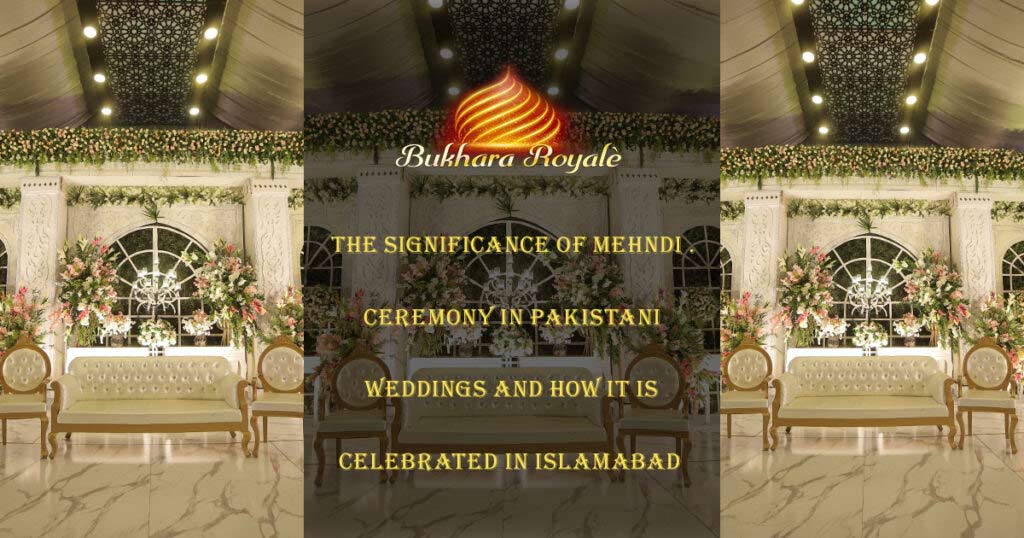
Weddings in Pakistani culture are a significant event, not just for the bride and groom but for the whole family. The Mehndi ceremony, in particular, is an essential pre-wedding tradition that is celebrated with great enthusiasm and joy. Mehndi is an ancient art of decorating the body with henna paste, which is believed to bring good luck and prosperity to the couple. In this blog, we will explore the significance of the Mehndi ceremony in Pakistani weddings and how it is celebrated in Islamabad, the capital city of Pakistan. From the preparations to the traditions, we will dive deep into this colorful and vibrant cultural celebration. So, let’s get started and discover the beauty of the Mehndi ceremony in Pakistani weddings.
Mehndi ceremony in Pakistani weddings
The significance of mehndi ceremony :.
The Mehndi ceremony holds a significant cultural and historical significance in Pakistani weddings. The tradition of applying Mehndi dates back to ancient times, and it is believed to bring good luck and blessings to the couple. In Pakistan, Mehndi is an essential part of the wedding festivities and is celebrated with great enthusiasm and joy.
Read More: Important Factors To Consider On Your Wedding Ceremony
Mehndi designs are symbolic and represent the bride and groom’s union. The intricate patterns and designs are usually applied to the hands and feet of the bride and other women in the family. The Mehndi is a symbol of love, prosperity, and fertility. It is also believed to ward off evil spirits and protect the couple from any harm.
Apart from its symbolic significance, Mehndi is also an essential part of traditional Pakistani beauty routines. It is known for its cooling and therapeutic properties and is used to treat various skin conditions. Mehndi also helps to strengthen nails, condition hair, and is an excellent natural hair dye.
Overall, the Mehndi ceremony holds immense cultural and symbolic importance in Pakistani weddings. It is a celebration of love, tradition, and beauty, and is cherished by families for generations.
Mehndi Ceremony Preparations
The preparations for the Mehndi ceremony in Pakistani weddings are extensive and involve various aspects. Here are some of the essential preparations that go into organizing a Mehndi ceremony:
- Venue decoration: The venue for the Mehndi ceremony is decorated with colorful flowers, lights, and drapes to create a festive ambiance. The seating arrangements for guests are also carefully organized.
- Choosing outfits: The bride and other women in the family select their outfits for the Mehndi ceremony. The outfits are usually colorful and vibrant, and often have traditional embroidery and designs.
- Traditional Pakistani foods and drinks: A variety of traditional Pakistani foods and drinks are prepared for the Mehndi ceremony, including biryani, samosas, pakoras, and lassi. These foods are served to guests, along with traditional sweets and desserts.
- Music and dance: Music and dance are an integral part of the Mehndi ceremony. A live band or DJ is hired to play traditional Pakistani songs and create a festive atmosphere. Guests also perform traditional dance moves like bhangra and giddha.
- Mehndi artists: A professional Mehndi artist is hired to apply Mehndi to the bride and other women in the family. The artist usually brings their own supplies, including henna paste, cones, and designs.
Overall, the preparations for the Mehndi ceremony are extensive and involve various elements to create a colorful and festive celebration. The preparations are a reflection of the importance of the Mehndi ceremony in Pakistani weddings and the cultural significance it holds.
Mehndi Ceremony Traditions
The Mehndi ceremony is full of traditions that are performed with great enthusiasm and joy. Here are some of the essential Mehndi ceremony traditions in Pakistani weddings:
- Applying Mehndi to the bride and groom’s hands and feet: The Mehndi artist applies intricate designs to the bride’s hands and feet, which are considered to be the most important parts of the body. The groom’s hands are also decorated with simpler designs.
- Mehndi designs: The Mehndi designs are symbolic and represent the bride and groom’s union. The designs often include patterns like paisleys, floral motifs, and geometric shapes.
- Dholki and Mehndi songs: The Mehndi ceremony is incomplete without music and dance. The dholki, a traditional Pakistani drum, is played, and guests sing Mehndi songs. These songs are often catchy and easy to sing along to, and celebrate the joy of the occasion.
- Traditional Pakistani foods and drinks: A variety of traditional Pakistani foods and drinks are served at the Mehndi ceremony, including biryani, samosas, pakoras, and lassi.
- Rituals and customs: Various rituals and customs are performed during the Mehndi ceremony. For example, the bride’s sisters and friends often play pranks on the groom and steal his shoes. The groom then has to bargain with them to get his shoes back.
- Bridal blessings: The women in the family give the bride blessings and gifts for a happy married life. The bride’s family also presents gifts to the groom as a symbol of acceptance and respect.
Overall, the Mehndi ceremony is a vibrant and colorful celebration of love and tradition. The Mehndi designs, music, and dance, along with traditional foods and drinks, create a festive atmosphere and bring joy to everyone involved. The traditions of the Mehndi ceremony are a reflection of the cultural and historical significance it holds in Pakistani weddings.
How the Mehndi Ceremony is Celebrated in Islamabad
The Mehndi ceremony is a significant event in Islamabad, and Bukhara Royale Marquee is a popular wedding venue in the city. Here’s how the Mehndi ceremony is celebrated at Bukhara Royale Marquee:
- Venue decoration: The Bukhara Royale Marquee is decorated with colorful flowers, lights, and drapes to create a festive ambiance. The seating arrangements for guests are also carefully organized.
- Mehndi artist: A professional Mehndi artist is hired to apply Mehndi to the bride and other women in the family. The artist usually brings their own supplies, including henna paste, cones, and designs.
- Music and dance: Music and dance are an essential part of the Mehndi ceremony at Bukhara Royale Marquee. A live band or DJ is hired to play traditional Pakistani songs, and guests also perform traditional dance moves like bhangra and giddha.
- Traditional Pakistani foods and drinks: A variety of traditional Pakistani foods and drinks are prepared for the Mehndi ceremony at Bukhara Royale Marquee. These include biryani, samosas, pakoras, and lassi. Traditional sweets and desserts are also served.
- Bridal entry: The bride enters the venue with her family, and guests welcome her with flower petals and applause.
- Mehndi designs: The Mehndi designs at Bukhara Royale Marquee are often intricate and symbolic. The artist applies designs to the bride’s hands and feet, which are considered to be the most important parts of the body. The groom’s hands are also decorated with simpler designs.
- Gifts and blessings: The women in the family give the bride blessings and gifts for a happy married life. The bride’s family also presents gifts to the groom as a symbol of acceptance and respect.
Overall, the Mehndi ceremony at Bukhara Royale Marquee is a colorful and vibrant celebration of love and tradition. The Mehndi designs, music, and dance, along with traditional foods and drinks, create a festive atmosphere and bring joy to everyone involved. The traditions of the Mehndi ceremony at Bukhara Royale Marquee are a reflection of the cultural and historical significance it holds in Pakistani weddings.
Conclusion:
In conclusion, the Mehndi ceremony is a significant event in Pakistani weddings, and it holds a special place in the hearts of the people of Islamabad. The Mehndi ceremony is a celebration of love, tradition, and culture, and it brings together family and friends to rejoice in the union of the bride and groom. The intricate Mehndi designs, the traditional Pakistani foods and drinks, the music and dance performances, and the various customs and rituals make the Mehndi ceremony a colorful and vibrant affair. At Bukhara Royale Marquee , the Mehndi ceremony is celebrated with great enthusiasm and care, and it is a testament to the rich cultural heritage of Pakistan. The Mehndi ceremony is a cherished memory for all those who participate, and it is a beautiful reminder of the power of love and community.
Leave a Reply

About Bukhara Royale
- Mehndi Event
- Barat Event
- Walima Event
- Tables & Buffet
- Dance Floor
Recent Posts
Unveiling the elegance of bukhara royale marquee in islamabad, the 5 most luxurious wedding marquees in islamabad, 5 creative event themes to wow your guests.

Want us to host your event?
Do you want direct contact with our team.
Fill our this form and get a callback in 24 hours.

Bukhara Royale is enriched with the most novel furniture and period features, it has stayed true to its roots whilst also providing a luxurious setting for your big day.
- Decore and Design
- Event Management
- Wedding Photography
- Terms & Conditions
- Privacy Policy
- Corporate Events
- Bridal Shower
- Fashion Shows
Copyright @ 2024
Developed By: E-Tech Marketing
HouseofPakistan
Culture, Community and Enterprise Connect
An Illustrative Guide to the Typical Pakistani Weddings
Pakistani weddings customs and traditions.
Weddings are a practice or a ceremony that unites two individuals. A wedding is an approach or a manner that different culture, societies, ethnic groups and religions aspire to unite two individuals in marriage. A wedding usually has a mandate personality who attests to the matrimonial contract and usually the bride and groom exchange representative items, such as a ring or any jewelry, as gifts to each other. The bride and the groom wear outstanding attire for their remarkable day.

Features of a Traditional Pakistani Wedding
According to Pakistani marriages which follow the Islamic Law (Shariah), as the majority population of Pakistan are Muslim; the matrimonial agreement is not just the unification of two individuals but a union between two families. A Pakistani wedding usually has vast number of events which vary according to the diverse Muslim communities, but the routine events of usual Pakistani Wedding are as follows:
- Marraige Proposal
- Engagement ceremony
- Henna ceremony
Barat and Nikkah
Polygyny in pakistan.
As Pakistan is a Muslim country , according to the Islamic Law, a man can be married to four women at the same time which is called Polygyny but under the marriage act of 1965, the man has to have a written consent of his former wife or wives to engage in marriage with another woman. Polygyny has become unique in Pakistan, especially in urban areas.
The Concept of Love VS. Arranged Marriages in Pakistan
As dating between a man and a woman are considered dishonorable for both sides of the family; the marriages are usually arranged by the parents and elder individuals of the families. An arranged marriage is usually finalized on the common ground of religious group, wealth and social background of the bride/grooms family.
However, Love marriages are becoming common in Pakistan due to the adoption of western cultures amongst the youth and dating is done in secrecy which usually leads to a marriage.
Budget and Time Estimated For a Typical Pakistani Marriage
As for the Pakistani wedding, it is the union between two families, the two families put in all their effort, time and money to make the ceremony as lavish as possible. The amount of events requires an estimated budget and agreement between the two families. The ceremony is divided into two parts , the proposal and engagement usually takes place a year before the actual marriage (the events follow), between these times, the two families prepare for the marriage and get to know each other better.
The Procedure of the Pakistani Wedding
When the proposal is finalized amongst the two families, the events of the ceremony officially begin and the date of the official proposal ceremony is finalized. Accommodation is set up for various relatives who are expected to attend the wedding from abroad or across Pakistan. Some people do not follow all the events but the main 3 events that are, Baraat and Nikkah , Henna ceremony and Valima . However, the ways these events are carried out depend on the geographical location of the wedding across Pakistan.
The Official Proposal Ceremony
A proposal party is held at the bride’s residence where the groom’s family officially asks for the bride’s hand in marriage which is followed by exchange of gifts and Surat-ul-fatiha is recited. This party usually takes place in the evening and tea time snacks and tea is provided to the guests.
Engagement Ceremony
A formal gathering on a rather large scale is held to announce the engagement between the bride and the groom. According to traditions, the bride and the groom are supposed to be separately engaged, where the bride is given the ring by the groom’s mother on a separate day and the groom is given the ring by bride’s mother on a separate day. However, now a days, two engagement parties are too much of a hassle for both the families so the bride and groom exchange rings the same day, which is followed by exchange of family heirlooms and gifts , religious quotes from the Holy Quran are recited and the date for the wedding is decided. A formal dinner is arranged for the guests.
It is basically an event where the bride’s and groom’s family, separately arrange a party at their respectable residence. The party consists of the women preparing dance routines for the following Henna function and the playing of the instrument called Dholak , along with old traditional wedding melodies which are sung amongst the family.
Henna Function
The henna ceremony usually takes place two to three days before the Nikkah. It traditionally consists of two events, each one for the bride and the groom. The bride does not accompany the groom at his henna ceremony and vice versa.
Groom’s Hina Ceremony
Traditionally, the groom’s henna ceremony consists of the bride’s family and the relatives bringing oil and sweets , the oil is applied to the groom’s hair and the groom on this day wears casual Shalwaar/kurta .
Bride’s Hina Cremony
On the Bride’s Henna ceremony , the Groom’s family bring Henna and sweets with them and the henna is applied to the bride’s hands by the groom’s relatives, the bride wear bright yellow , orange or green and usually does not apply makeup or wears jewelry. The women folk get Henna applied to their palms too. Dance routines and skits are performed as to make the occasion more happening.
Nowadays the bride’s and groom’s Henna ceremony is held together and all the traditions are performed by the respective families.
Barat is principally the arrival of the groom at the Nikkah ceremony accompanied by his relatives and family members on a horse carriage and a band playing songs follows. Nikkah is an Islamic act, where the bride and groom sign a marriage contract followed by the recital of Quranic Surahs and Dua for the married couple’s future. The act of Nikkah is observed by close relatives and family in the presence of an official “imam†licensed by the government.
Marriage is considered illegal without Nikkah. The marriage is only consensual when both the bride and the groom have two witnesses present.
The Nikkah either takes place a day before the reception or at the same venue before the reception ceremony begins. The relatives arrive at the bride’s residence where the wedding reception is supposed to take place or a hall booked by the bride’s family. The barat is welcomed with shower of roses by various members of the bride’s family. Sisters and cousins of the bride demand cash in order to allow the groom to enter the hall. The Groom is dressed in traditional attire, “Sherwani†with a headpiece known as the ‘Sehra’ or ‘turban’ . However, the bride wears a red, purple or pink traditional dress called ‘lengha’ which comprise of heavy embroidery , the bride also wears bridal style shoes and heavy gold jewelry or traditional gold plated jewelry along with bridal hair style and makeup. The scrumptious dinner is arranged by the bride’s family which is followed by various desi desserts.
Rukhsati is a tradition in which the bride and the groom followed by the groom’s family leave the reception ceremony towards the groom’s residence. The Holy Quran is held at the top of the bride’s head to shower lords blessings and in order to protect her. This indicates that the bride is now supposed to lead a new life with her husband and new family, which usually results in tears shed by the bride and her family.
The Valima ceremony is the final dinner organized by the wedded couple after their marriage is consumed and publicized. The basic purpose is to celebrate their marriage. The dinner arrangement and the wife’s dress and gold jewelry is provided by the husband. The Valima ceremony also signifies the blessings of the groom’s parents upon the married couple for a content marriage life. The wedding officially ends with wedding present presented to the bride and groom usually in the form of cash. The couple decides a honeymoon destination as to celebrate the first few days of marriage, the northern areas of Pakistan are usually chosen as the honeymoon destination; however well off families prefer overseas honeymoon trip.
8 Pakistani Wedding Traditions and Rituals
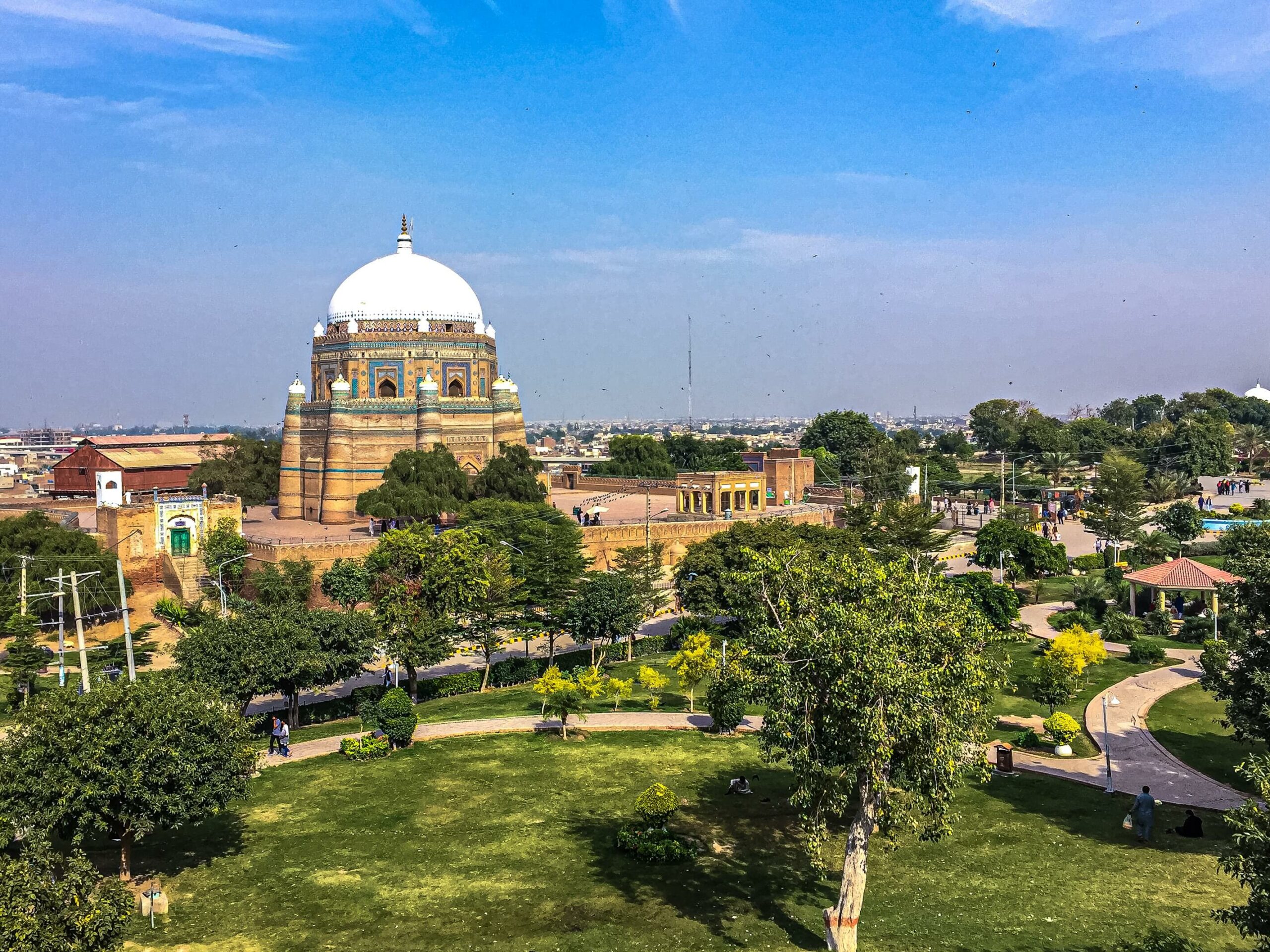
Pakistan is a beautiful country with a blend of cultures that dates back to its link with the Indian subcontinent. Pakistani people follow many traditions from the Mughals in South Asia.
The extravagance and elegance of royal Mughals play a massive role in how Pakistani people throw weddings.
Pakistani weddings are long celebrations of the bride and groom. They celebrate each person individually, the combination of families, and more.
If you’re invited to a Pakistani wedding, brace yourself for a week of celebrations, love, and fun.
8 Pakistani Wedding Traditions and Rituals
There are so many things that make Pakistani weddings unique and beautiful events.
If you want to learn more about Pakistani culture, here are eight of the most popular Pakistani wedding traditions and rituals.
Several days before the legitimate Pakistani wedding starts, the bride, groom, their families, and close friends will gather for a dholki. Close friends and family who don’t live in town will travel to the bride and groom’s homes and stay there until the end of the wedding festivities are over and participate in dholki functions.
During a dholki, everyone gathers in a circle on a floor with beautiful rugs and cushions to sing Pakistani wedding songs to the beat of a dholak. The grandmothers bless the bride and groom with prayers and well wishes.
Typically, the dholki traditions are separate, and the bride and groom each have their own. The dholki tradition allows for bonding with all the family members separately before the union.
2. Mehndi Night
You probably heard about mehndi night even if you know nothing about Pakistani weddings. Pakistani mehndi is famous for its intricacy and vibrancy. Mehndi night is one of the first Pakistani wedding traditions the bride will participate in, where she gets henna on her hand in mehndi designs.
Other women will spend time performing dances for the bride throughout the night while she gets her bridal henna finished. They spend weeks preparing the dances, and there’s plenty of music to fill the air. The henna takes quite a while, but patience and skill make it look stunning for her wedding day.
Brides typically wear a yellow mehndi dress, but they can wear whatever they want and wear little to no makeup throughout the process. They’ll have beautiful fresh flowers as their jewelry and plenty of orange flowers throughout the space. You’ll see delicious food served like halwa poori paan, barbeque, and other Pakistani delicacies.
A Mayun is a Pakistani wedding tradition that is more important in certain parts of Pakistan than others but worth mentioning. This tradition occurs a few days before the wedding, where the female family members and friends surround the bride and perform various Pakistani rituals.
Some rituals include putting oil on the Pakistani bride’s hair and then ubtan on her arms, feet, and face. This ritual is rooted deeply in tradition and passed down from Pakistani ancestors. Usually, the ceremonies are performed chiefly by the grandmothers and other older adults because they’ve been through it before.
The Mayun represents preparing the bride for her wedding day, and Pakistani people believe it helps enhance her natural beauty. During the Mayun, the bride isn’t allowed to leave her house because they consider it bad luck. Not everyone follows that part strictly anymore, but elders are very superstitious about it.
4. Nikkah Ceremony
Before the incredibly fun receptions of Pakistani weddings can happen, the Nikkah ceremony needs to happen. The Nikkah ceremony is when the bride and groom sign the legal marriage contract. They get to choose at least two witnesses from both sides to witness the ceremony.
The Nikkah ceremony is an emotional time for the bride and her family because it’s officially her transition to her new life. Her name is now signed under the name of her new husband forever. This intimate event is only open to the couple’s immediate family members or close friends.
The attire for a Nikkah ceremony is pastel colors. The bride wears white and a red dupatta with a natural makeup look. The groom will wear a shalwar kurta that has a golden waistcoat.
5. The Barat
After the Nikkah comes to the Barat , this is a massive event in Pakistani weddings. The Barat is the day when the Pakistani groom and his family come to take the bride away. Sometimes, his friends will join in the tradition. The bride’s family arranges the event, so it’s not as aggressive as it might sound for the groom to “take her away.”
A modern-day Barat is hosted at a large wedding hall with delicious food and many photo opportunities. The Barat is a massive event with hundreds of guests, but they can be smaller depending on the preferences of both families.
The groom will wear a traditional sherwani while the bride is in an Anarkali lehenga dress. More minor traditions are scattered throughout the Barat ceremony, many of which are personal to the bride and groom’s family members. It’s a fun event that all enjoy, regardless of whether the guests are Pakistani or not.
6. Rukhsati
Once the Barat is over, the Rukhsati happens. While this is a major tradition in Pakistani culture, Rukhsati is a sad day for the bride despite the excitement and happiness that her new marriage is bringing her. It’s a ceremony all about her leaving her parent’s home and leaving behind her childhood memories.
The bride and groom will leave the venue at the same time in the presence of their elders. It’s like a send-off, and it’s basically the bride’s family giving her permission to start a new chapter in her life.
The parent’s bride will give her away with the Holy Quran above her head. This symbolizes them sending their daughter off to her husband with the blessing and protection of Allah. So, while the bride’s family is very emotional, feeling sad and happy simultaneously, the groom’s family is elated.
Walima is the final event of any Pakistani wedding, which is what Western cultures call the reception. Usually, Valimas has a comfortable atmosphere with beautiful flowers and lighter-colored decor. Unlike the big parties many people have, the music is quieter at a Walima.
The music is quieter at this reception to allow everyone to mingle and bond over their happiness for the couple. Everyone dresses in formal attire like suits and dresses in light colors with extravagant jewelry. The groom is in charge of organizing the Valima, which stems from Islam’s religious traditions.
Usually, they throw this the day after the Barat or several days after, whatever is more convenient for both families. Grooms wear a two or three-piece suit, and the bride wears a sharara in a pastel color. As with most traditions in Pakistani weddings, this is a very long reception and symbolizes the happiness the new marriage should bring the couple.
The Ubtan, or Haldi ceremony, is a traditional ceremony similar to an Indian spa day. It’s an essential part of the wedding that allows the bride and groom to feel and look their absolute best on their wedding day. Typically, the Ubtan ceremony will occur the day before the wedding, but this can vary.
The tradition of this ceremony before weddings dates back to when modern-day spas didn’t exist. People will pamper the bride by applying turmeric or Haldi on the bride’s face and body. The people who do this are very close friends and family to the bride.
The bride will sit on a wooden stool while loved ones make turmeric paste with almond oil, sandalwood powder, gram flour, milk, and rose water. The groom’s family sends the turmeric paste to the bride’s family to apply.
Frequently Asked Questions
If you want to be the best guest at a Pakistani wedding or learn more about their customs and traditions, here are some additional questions others ask about Pakistani weddings.
How Many Days Does a Pakistani Wedding Last?
The bride, groom, and their families will have a week to prepare for the main event. For guests, you can expect a traditional Pakistani wedding to last for three days with three main events. Some people add smaller events in between for close friends and family, but it’s all dependent on the bride, groom, and their families.
Who Pays for a Pakistani Wedding?
Traditionally, the bride’s father is the one who pays for the extravagant wedding. Sometimes other members of the bride’s family will pitch in, and even sometimes, the groom’s family, but that’s for more non-traditional Pakistani weddings. There are certain traditions that the groom plans, which he will pay for, or his family.
What Should You Wear to a Pakistani Wedding as a Guest?
You should always consult with the wedding invitation for attire, but traditionally, women will wear Pakistani dresses with heavy embroidery. Mainly, female guests will wear a Sharara. Men can generally wear a Western-style suit or tuxedo. Be sure to check with your wedding invitation for an official attire suggestion.
Related posts:
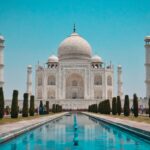
- South Korea
- Philippines
- Guest Post & Collaboration
The Complete Guide to Pakistani Wedding Traditions
Marriage, like in any other culture, is also a grand celebration in Pakistan, and the people of Pakistan never take the preparations for a wedding lightly. Pakistani weddings in the modern era are getting more and more expensive as every family wants the best wedding for the couple, and that comes with certain types of abilities required in photographers for weddings and event planners to be “cool and unique.”
Thumping music, gorgeously decorated balconies, and the overpowering beauty of the entire venue are essential elements of a perfect Paki wedding. Let’s discuss what other traditions Pakistanis hold during a wedding ceremony.
An average Pakistani wedding requires a lot of cultural preparation and might take up to a month to plan. In short, everything begins with a proposal and is followed by an announcement of an engagement. Then comes the “Baraati,” or a group of the Groom’s closest friends, family, and relatives who will follow him to the bride’s house in accordance with the local customs. The bride is typically dressed in a red or maroon lehenga that is heavily embroidered and adorned with gold jewellery.

And, of course, a Pakistani gathering wouldn’t be complete without some delicious cuisine. A luxurious dinner is served that includes traditional dishes, including kababs, pulao, chicken tikka, tandoori, and blended vegetables.
During the event, each family member and their family are invited on the stage to have a photoshoot with the newly wedded couple, and gifts are handed out to the newly wedded couple by relatives.
Nikkah is the most important event to officially announce a wedding, followed by all the joyous occasions like Mayun, Dholki, Baraat, and Walima. Sounds too complicated, doesn’t it? Let’s get to know about Pakistani customs in more detail!
Sending a Wedding Proposal
The first step of planning a wedding in a Pakistani household is to send a wedding proposal to the girl’s house. In Pakistani traditions, photographs of the boy and girl are swapped between the families and shown around in the family to get the approval of elders as well as the boy and girl.

The younger generation in Pakistan sometimes criticises this because they believe it dehumanises the couple, especially the bride, by going and scanning them like objects. However, it is still an important part of a Pakistani wedding.
Even though love marriages are getting common in Pakistan, these practices are still required to be followed to get approval from the other family.
A Pakistani man still has a very difficult time submitting the marriage proposal of his choice since it is still frowned upon in many households for men and women to interact.
An unexpected proposal might come to a girl at any time or place, especially in Pakistan. If things are peaceful and the family gets along, someone who wants to make her their daughter-in-law may ask for her hand at the ceremony.
Usually, the groom-to-be’s mother would go to the bride-to-be’s family with sweets and ask for her hand. If the girl’s family approves, the wedding preparations are started. The two families then meet often to decide the date for the wedding.
Mangni (Engagement)
The engagement ceremony, or Mangni, which serves as the couple’s official engagement, is the first of the wedding’s events.
This might be a small family-only gathering or a grand event. It involves accepting the proposal and exchanging rings as a sign of marriage. Some families can choose to skip this event and be part of the other events instead.
In the modern age, every bride, Groom, and family wants the most beautiful décor for their wedding. A Pakistani wedding demands perfect lighting, flowers, bridal seat, and stage design that boasts how big the occasion is for the couple and the family.
The wedding decor theme for the ceremony must be unique and have a personal touch. When a person is engaged, they should also think about the content, design, style, and appearance of the wedding card to make sure they will match the couple’s personality. On the card, there are names of VIP guests who are closely related to the couple and must attend the wedding. Special treatment is given to these guests.
Mayan/Mayun
Mayun is an exciting event in Pakistani wedding festivities. It is the second event of a Pakistani wedding in which the bride’s family gathers in the backyard of their house or in an open lawn setting. The theme of the event is always yellow, from the dresses of the bride and her relatives to the color of flowers and every decor for the event. Haldi is put on the hands and faces of the bride as her friends and cousins sing romantic songs on a Dholki.
The word “Dholki” refers to a type of drum used in Indian music known as the “dholak.” The week before the henna night, there are women-only gatherings called dholki nights. Female friends, cousins, and family members of the bride sing love songs on the beat of the dholki. Sometimes dance routines are also prepared on different traditional wedding songs. The dholki nights can span over a week before the event of “mehndi,” which is usually also the first event of a wedding in some cases.
“Dholki” is a traditional part of a Pakistani wedding. It is a moment for the bride and Groom’s close friends and family to enjoy themselves without any pressure. While this event is common for the family of the bride, in some cases, the family members of the Groom also organize dholki nights at his home separately.
In the past, people used to organize 20 dholki nights. The custom of Dholkis is diminishing as fewer people are celebrating one, two, or at most one week of Dholkis as everyone’s life has become busier as time goes by.
Nikkah is also one of the most important events of a Pakistani wedding, as it has religious reasons behind it. As the majority of the Pakistani population follows Islam, there are a few Islamic rituals that need to be followed to become a lawfully wedded couple.
The event of Nikkah is the same as the event of engagement in western culture. A “maulvi” or a minister in a Christian wedding, recites Quranic verses, and then a similar act of “I do” is done where both the Groom and the bride have to say “Qabool he” as in “I accept,” three times repeatedly.
In the past traditions, the bride and the Groom were required to sit in different rooms, but that trend has changed now for decades, and the couple can sit together in each other’s presence as they get engaged.
Another part of Nikkah is the decision of “mehr” which is a gift that the Groom is required to give to his wife. This is also a requirement in Islam that needs to be followed to be lawfully wedded.
Wearing an embroidered shawl over their heads, the bride and Groom are intended to gaze at one another in the mirror. The “showing of the face” is a requirement of the ritual known as Aarsi Mushaf Dikhana, also known as the muh dekhai. This is a tradition from the past that is less common nowadays.
A Mehendi celebration is one of the pre-wedding activities for the bride and her closest female friends and family. A component of the Solah Shringar, or sixteen bridal decorations in Hindu culture, is known as mehendi.

Henna, food, and music
Be ready for a fun-filled evening of delicious food, lively music, and dancing when you go to a mehendi ceremony. Henna sometimes called as ‘mehndi’ is a dye made from the Lawsonia inermis henna plant. It is used to make designs of flowers on the hands and arms of the bride.

Henna / Mehndi
Mehndi celebrations are just as they are shown in the Bollywood movies, with everyone dressed in yellow, white, or green dresses, and sweets such as gulab jamun, laddu or rass gula being served to people invited at the event.
But the most important thing in a mehndi function is the music and dance. Cousins of the bride prepare dance routines on the beat of dholki or sometimes on Bollywood party songs.
In some cases, women sing and play the Dholak, a kind of drum, while seated and surrounded by colorful throw pillows and colorful décor.
Some rituals are carried out for religious reasons, while others are performed to enjoy the celebratory event. The Baraat custom is one notable event. The Baraat is the Groom’s festive wedding procession, which features dancing and live music. Although the idea originated in North India, it has now been adopted by many cultures and nations, including Pakistan.
Music And a Ceremonial Horse
Baraat is one of the most important days of a Pakistani wedding. The Groom mounts a ceremonial horse as he reaches the wedding venue, and his guests dance in front of him to the beat of Dhol.
If there aren’t enough Baraatis, the Groom could still project swagger and confidence. If a friend can play the dhol during your wedding, you’ve struck gold.
Since pure dhol lowers the expense of baraat and leaves the fun-making to your friends and family, it is both delightful and economical.
Throwing rose petals on Groom and his guests
In order to welcome the Groom’s family, the female members of the bride’s family fill plates with rose petals and throw them on the Groom and his guests as they arrive in the ceremonial hall.
Later the bride comes and sits with the Groom and then begins a series of baraat rituals.
Rasam Kursi
“kursi ki rasam” means “the chair ritual.” In this ritual, as a comical skit, any girl from the bride’s side sits with the bride leaving no room for the Groom to sit. The Groom’s family has to give a gift, usually money, to the girl to leave space for the Groom. This is a tradition that is followed everywhere in Pakistan.
After some teasing, the bridegroom’s family agrees to give some cash in exchange for the Groom’s right to sit with his bride.
Similar to the previous tradition, dudh pilai involves the bride’s side girls making the groom drink milk that has been mixed with other delicious ingredients and then asking him for money in exchange. In this ritual, it is a must for the Groom to drink a glass of milk and pay the bride’s side girls.
At the end of baraat, the bride is supposed to leave the event with her husband. This moment of the event usually ends in lots of tears coming from the bride and her family members as they see their girl leave their house for Groom’s house and family members say their goodbyes to her. The bride is accompanied by her mother, sisters, and cousins as she leaves the event for her Groom’s house.
The ritual used to officially recognize the Nikkah is known as Walima, an Arabic word that connotes a sense of gathering and assembly. It is performed with the Nikkah, after the Nikkah but before the wedding celebration, or during the wedding ceremony. The Walima celebration is often organized by the Groom. People from both sides of the family are invited to the event.

Snacks and salami
The main event of this happy occasion is the bride’s parents and other family members receiving lunch or dinner from the Groom’s parents. The girls on both sides take charge of delivering these salamis . The bride’s family gives the Groom a salami, which the Groom’s family then gives back to the bride.
Pakistani wedding culture is bright, colorful, and mysterious in ways that deserve to be explored for its aesthetics and fun. A typical Pakistani wedding is a huge event, unlike a western-styled wedding, and is generally more expensive. But Pakistanis love to share the best moment of their lives with their friends and family; therefore, these extravagant wedding costs do not bother them as long as everyone is happy with the arrangements and has a blast at the wedding. If you ever get a chance to go to a Pakistani wedding, believe us, you are in for the kind of thrill you have never experienced before.
Further Reading...

20 Incredible ideas of Indian bride poses you would want to steal

Modern Vietnamese Wedding Food: A Complete Guide

Javanese Wedding Beliefs
A guide to wagering in californi, the ultimate guide to pakistani business culture.
- Teasenz Tea Store

- Celebrities
Everything About Pakistan Wedding Culture, Traditions and Customs
The wedding is the biggest family event in every Pakistani society, culture and ethnic groups. It is a social gathering where different cultures, traditions, religions are mixed together in the different way of traditions.
There are different or most common customs, or events are below:
Mangni Ceremony
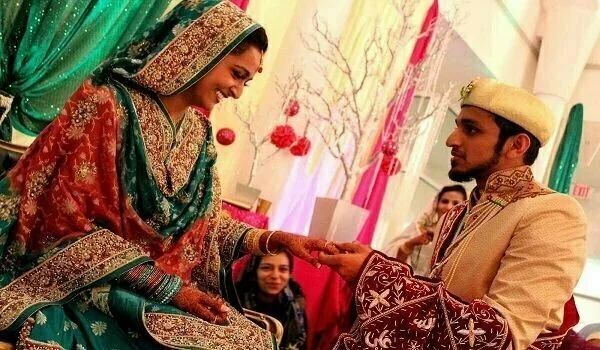
In English, we called it engagement it is just a promise between both the families of bride and groom in the near future. It’s very pleasant celebrating event before the wedding ceremony .
Mayun Ceremony
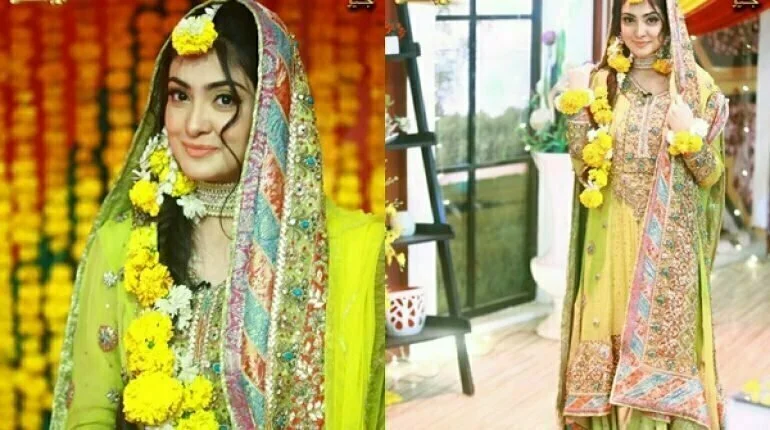
It is a traditional event which is practised in Pakistani wedding, someday before the wedding. In these days the bride wears a yellow dress and applied ubtan on her.
Mehndi Ceremony
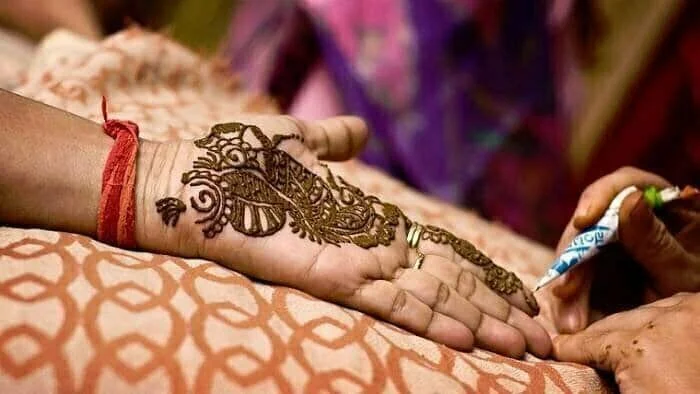
It is ceremony named as henna; it is a dye applies on the hands of bride and groom. This held before the main wedding ceremony and traditionally held separately but nowadays in some families its combine function. This ritual considers being bringing good luck and longevity to the bride’s married life.
Baraat Ceremony
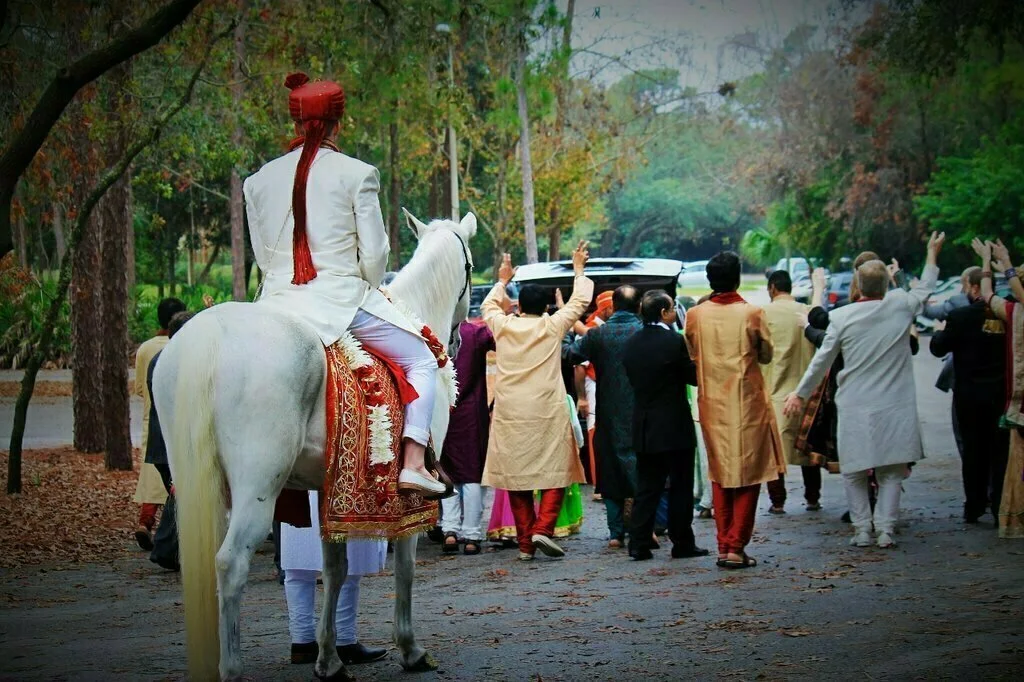
It is the event of the family, relatives and friends of the grooms who gather to the bride’s home for the official wedding ceremony. This is traditionally a large event groom come with wedding bands and dhols etc.
Nikah Ceremony
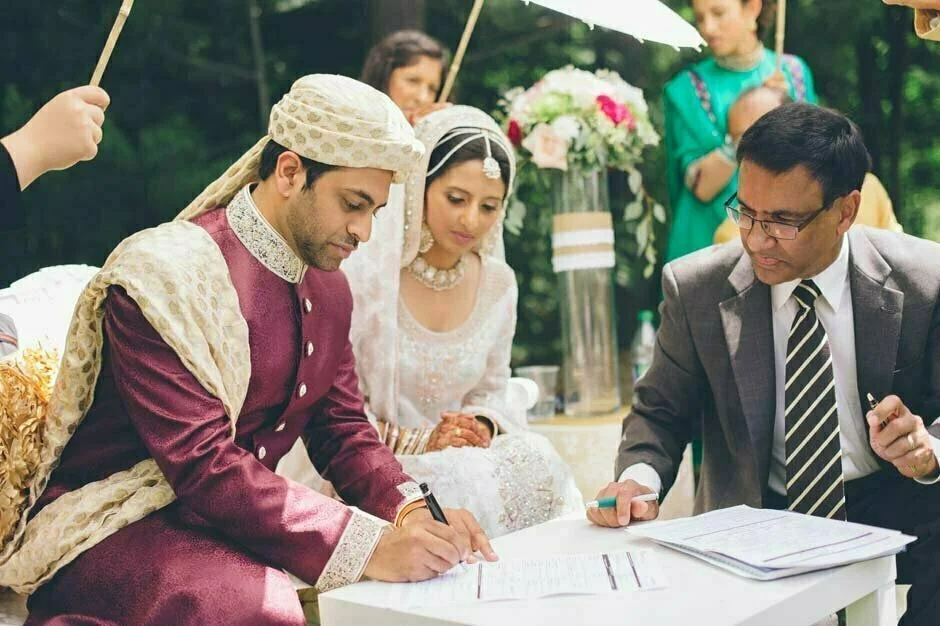
According to Islamic shariah, it is formal binding contract which is an integral part of an Islamic marriage religiously, it describes the responsibilities and right of groom and bride and signed by both bride and groom on nikah document in the presence of their family members. Haq mahr is given to the women as a gift.
Mooh Dikhai Ceremony
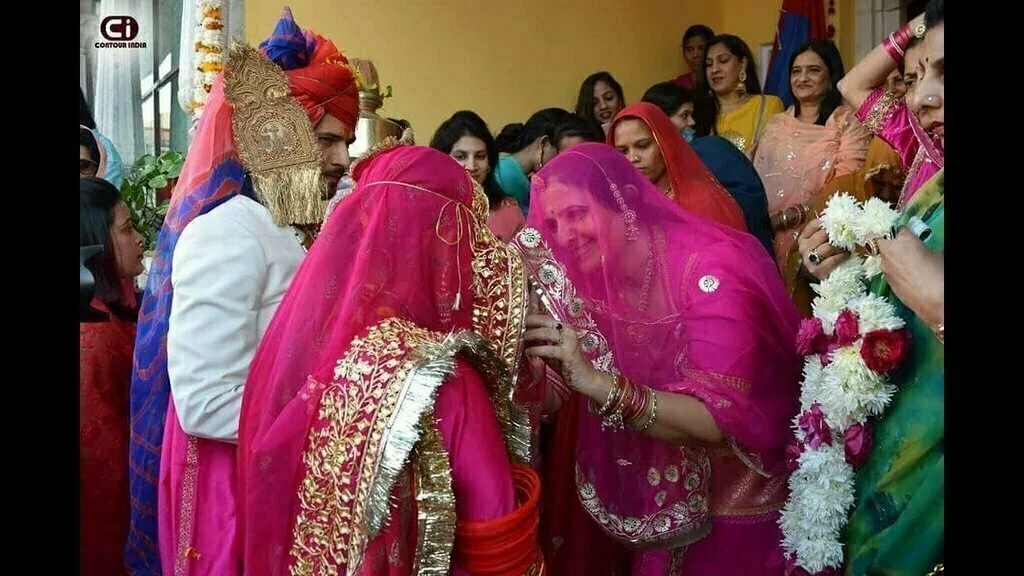
It is the ceremony of first time showing face in the mirror to the bride and groom’s each other after nikah. They share a piece of sweets this custom is mostly known as “Aarsi Musshaf.”
Doodh Pilai Ceremony
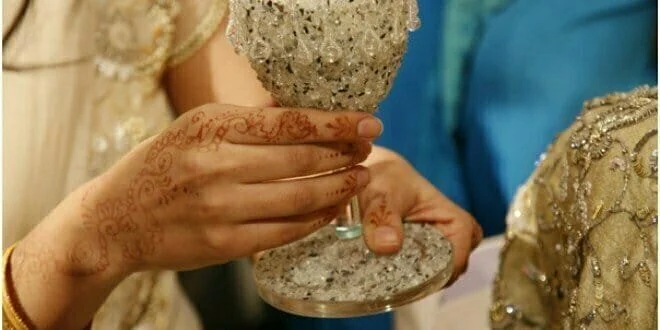
It is the most common custom in Urdu speaker’s families, on the main day of wedding bride’s sister, cousins, and friends bring milk for groom and demand money or gift in return.
Rukhsati Ceremony
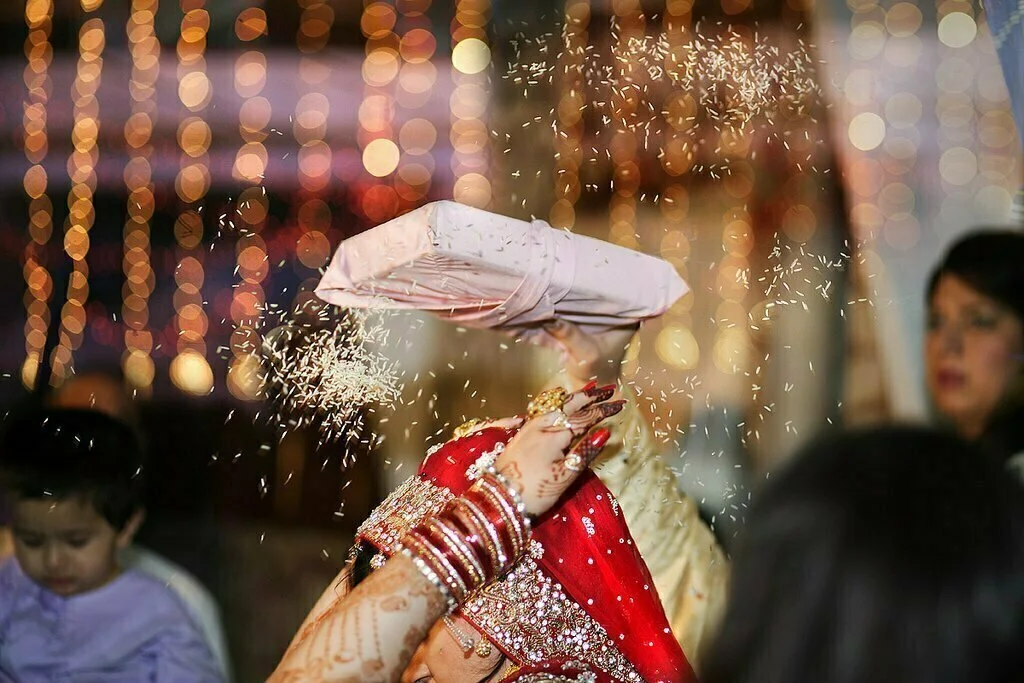
After the nikah ceremony bride left her home.in order to bless and protect the couple, the Holy Book Quran e Pak is held over the brides head, and she leaves the house.
Walima Ceremony
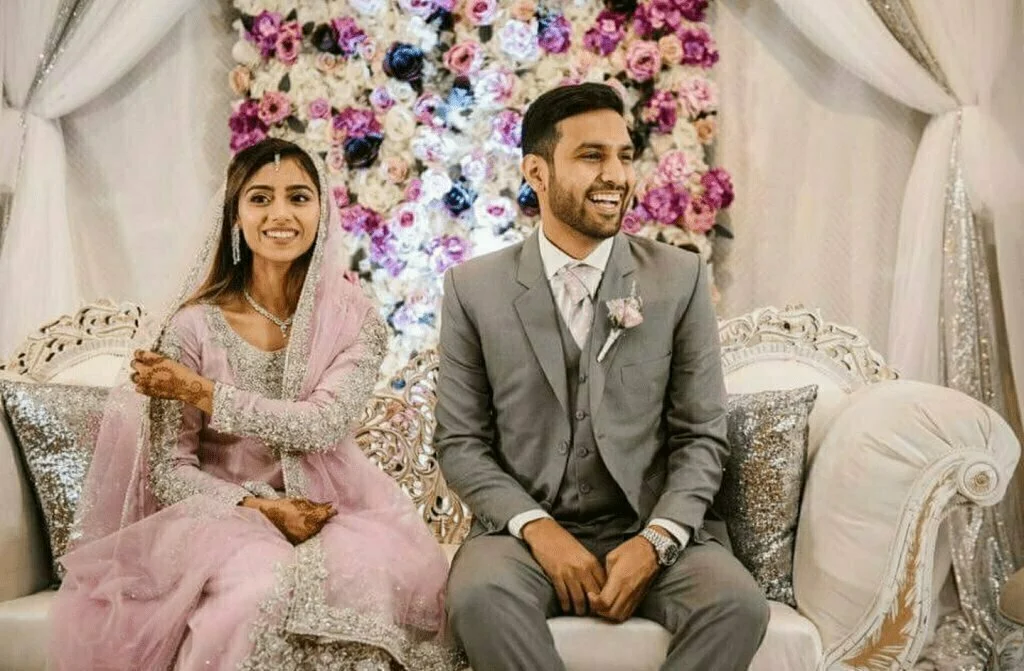
Walima is derived from the Arabic word “ awlam ” which mean together in a party. Walima is performed after nikah and rukhsti ceremony which is organised by the grooms and his family. Walima is typically the happiest events of the wedding ceremony and to publicise the marriage.
Mobarki Ceremony
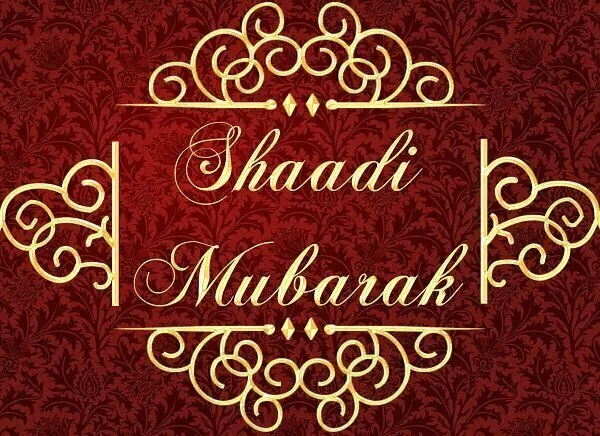
In Bloch wedding, its common tradition after wedding rituals and is hosted by the bride family. The grooms and brides family relative and friends are invited to this event.
Chauthi Ceremony
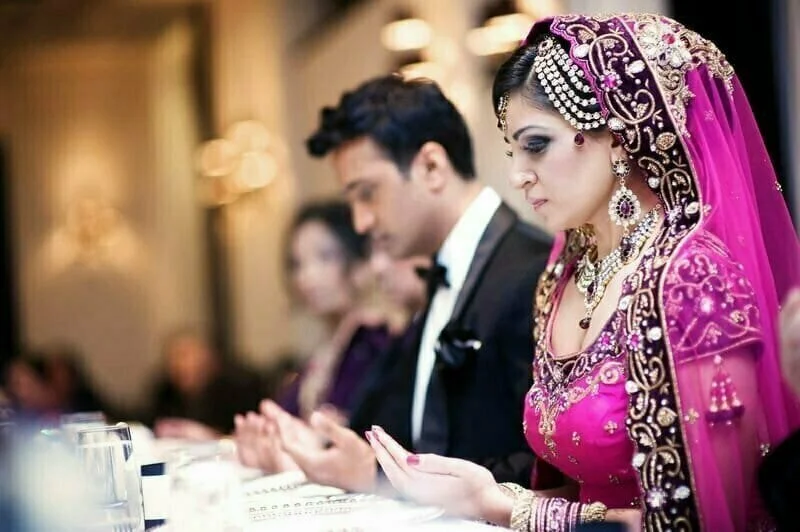
It is most commonly known as the fourth day; it is the custom of bringing back bride at her parents’ home and arranges the dinner for the groom family members. Mostly the bride’s brother goes to fetch their sister home
Gift Ceremony
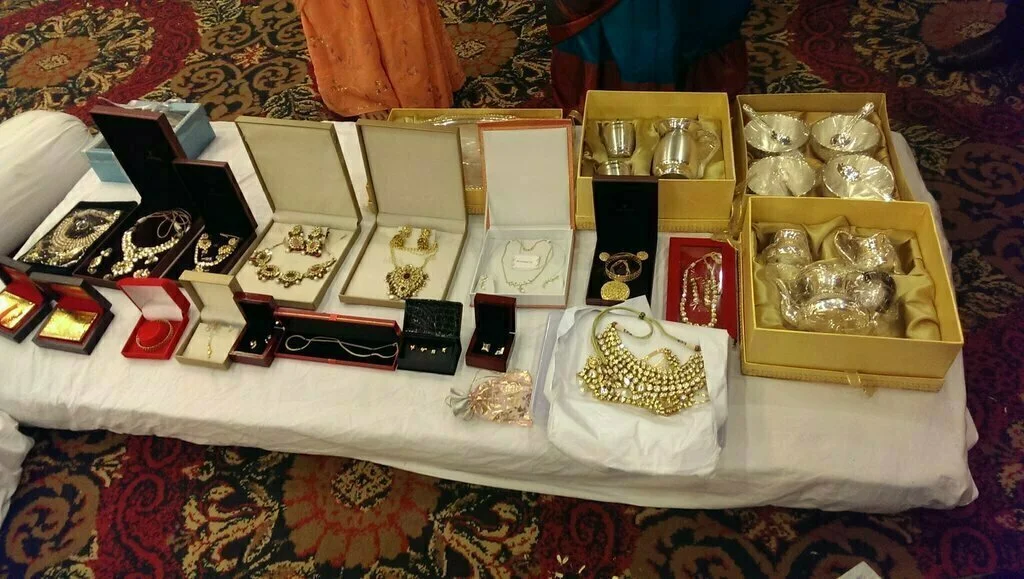
In this ceremony the bride and groom both receive wedding presents in the form of cash, and envelop is given to the bride and groom. Then friends and family of couple invite them for dinner and lunch.

About Author
Popular Articles


How to Plan a Pakistani Wedding
Share this article
A wedding is an important occasion in Pakistani culture, and planning a Pakistani wedding requires a lot of attention to detail. From the traditions to the attire, there are many elements to consider when planning this significant event. In this article, we will explore how to plan a Pakistani wedding and what you need to know about its traditions, the ceremony, the reception, traditional wedding ensembles, and where Pakistani weddings take place.
Table of Contents
These traditions make Pakistani weddings such a joyous and colorful occasion. Each tradition is a reflection of the unique cultural heritage and traditions of the region, and adds to the rich tapestry of the wedding celebration.
- Nikah: The Nikah ceremony is the sacred moment when the bride and groom exchange vows, pledging to love, honor, and cherish each other. As the two families come together, the Imam, or religious leader, recites verses from the Quran and witnesses the signing of the marriage contract, sealing the couple’s commitment to one another.
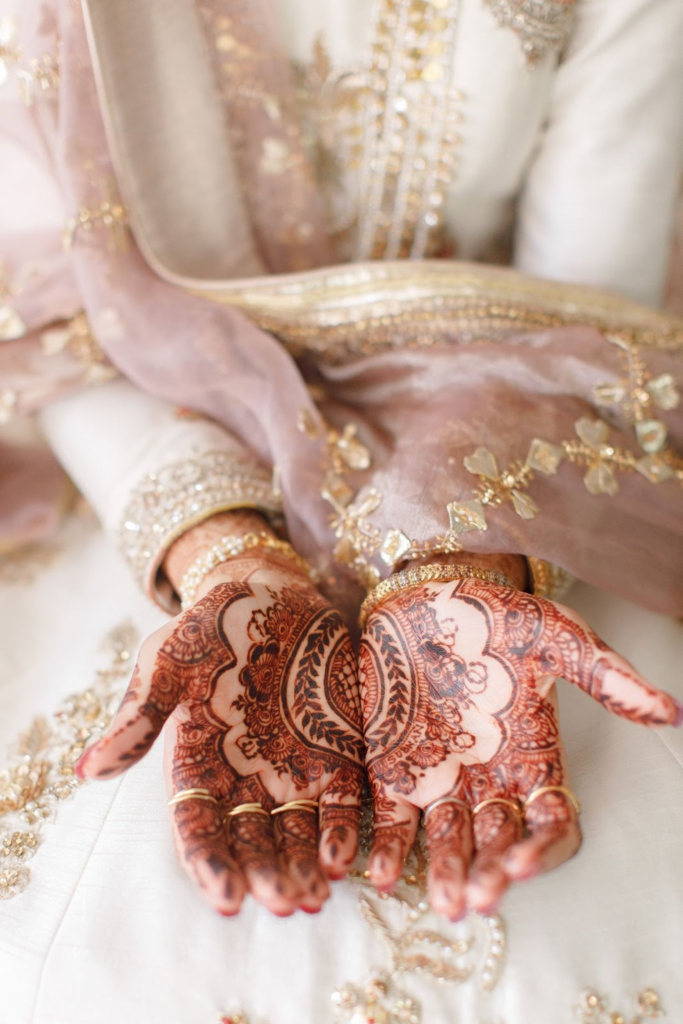
- Mehndi: A lively celebration filled with music, dancing, and intricate henna designs, the Mehndi ceremony is a beloved pre-wedding tradition. It’s typically held a few days before the wedding day, and is a chance for the bride and groom’s families to come together, share in the joy, and celebrate with one another.

- Baraat: A grand and joyous procession that marks the arrival of the groom to the wedding venue, the Baraat is an unforgettable experience. The groom arrives on horseback, adorned in traditional attire, and is greeted by the bride’s family. There’s music, dancing, and a carnival-like atmosphere, as everyone celebrates the union of two families.
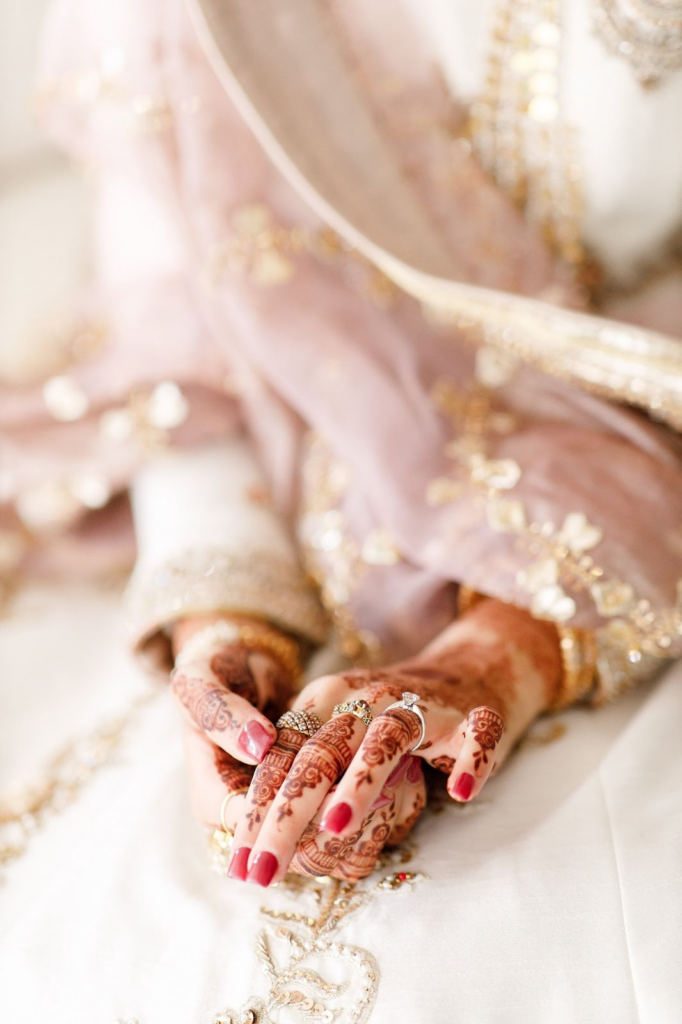
- Dowry: As a sign of love and respect, it’s customary for the groom to present the bride with a dowry, which can include jewelry, clothing, or other items of value. It’s a way for the groom to show his appreciation for his bride and her family, and is a cherished tradition that adds to the richness of the wedding celebration.
The Ceremony
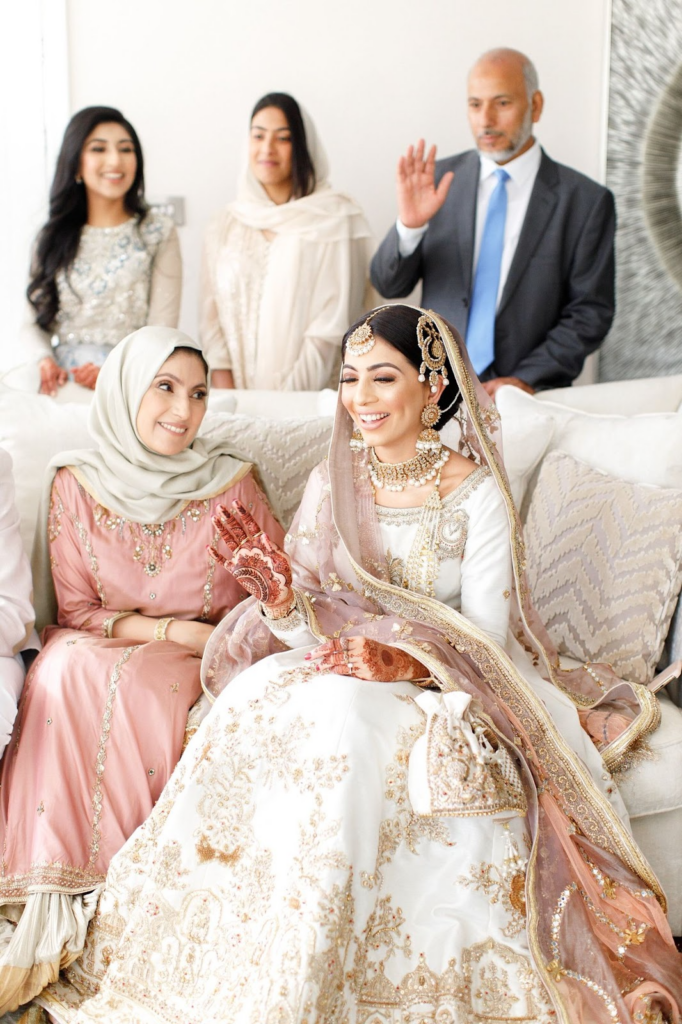
The wedding ceremony itself is called the “Nikah.” This is the formal contract between the bride and groom, where they both agree to marry each other. The Nikah is conducted by an Islamic scholar or a priest and is usually held in a mosque or a hall.
During the Nikah, the bride and groom exchange vows and sign the marriage contract in the presence of witnesses. The bride’s father or a male family member gives her away, and the groom accepts her as his wife. The ceremony is concluded with a prayer and a reception.
The Reception
After the Nikah, the couple and their families celebrate with a reception. The reception is usually a grand event, with music, dance, and food. The bride and groom enter the reception venue together, and the guests greet them with rose petals and confetti.
The reception usually includes speeches from family members, friends, and the couple. There is also a lot of dancing, with both traditional Pakistani dances and Western music. The food at the reception is usually a lavish spread of Pakistani cuisine, including biryani, kebabs, and sweets.
Traditional Wedding Ensemble

The traditional wedding ensemble for the bride is a heavily embroidered dress known as a “lehenga” or “sharara.” The dress is usually in bright colors, such as red, green, or gold, and is heavily embellished with sequins, beads, and embroidery.
The groom’s traditional wedding outfit is a “sherwani,” which is a long jacket worn over a pair of trousers. The sherwani is usually in a muted color, such as white, cream, or gold, and is embellished with embroidery or embellishments.
Where do Pakistani Weddings Take Place?
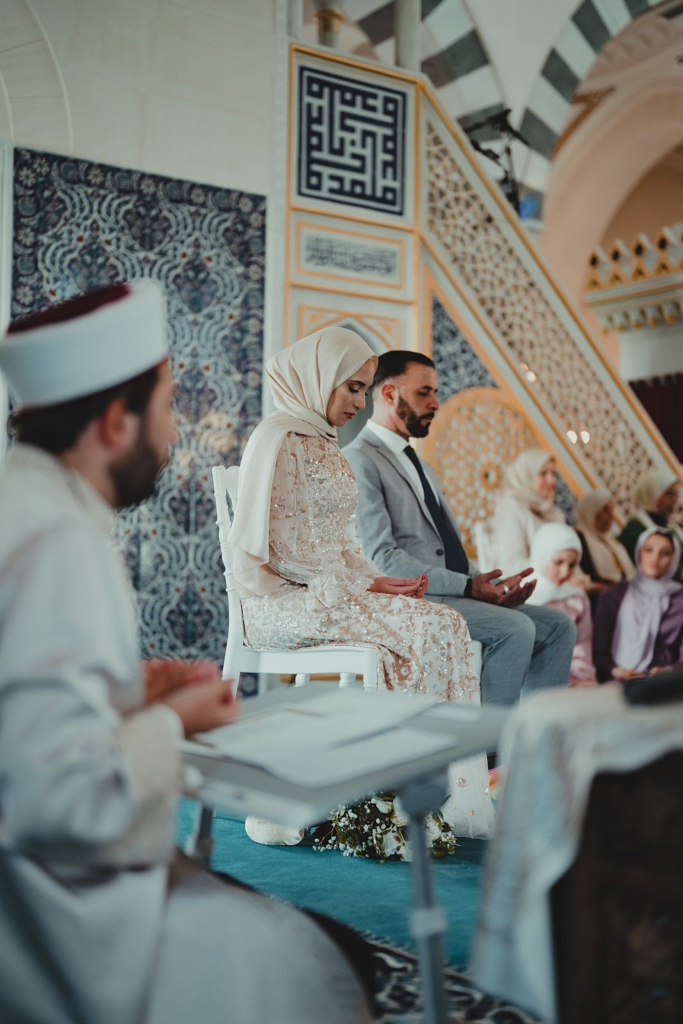
Pakistani weddings are celebrated with great enthusiasm and are usually held in venues that reflect the couple’s taste and budget. There are various options available for hosting a wedding in Pakistan, including mosques, wedding halls, and outdoor venues such as gardens, farms, or beaches.
The choice of venue depends on various factors such as the size of the guest list, the season, and the budget. Mosques are often chosen for the nikah ceremony, while wedding halls provide a more formal setting for the reception.
Planning a Pakistani wedding involves incorporating rich cultural traditions and customs that have been passed down through generations. From the engagement ceremony to the lively reception, a Muslim wedding is a celebration of love, family, and community. By understanding these traditions and customs, you can create an unforgettable event that reflects your heritage and celebrates your unique love story.
READ MORE: Love Across Cultures: A Dubai Destination Wedding
Posted in Trending, Wedding Traditions by wedded wonderland
<< Previous
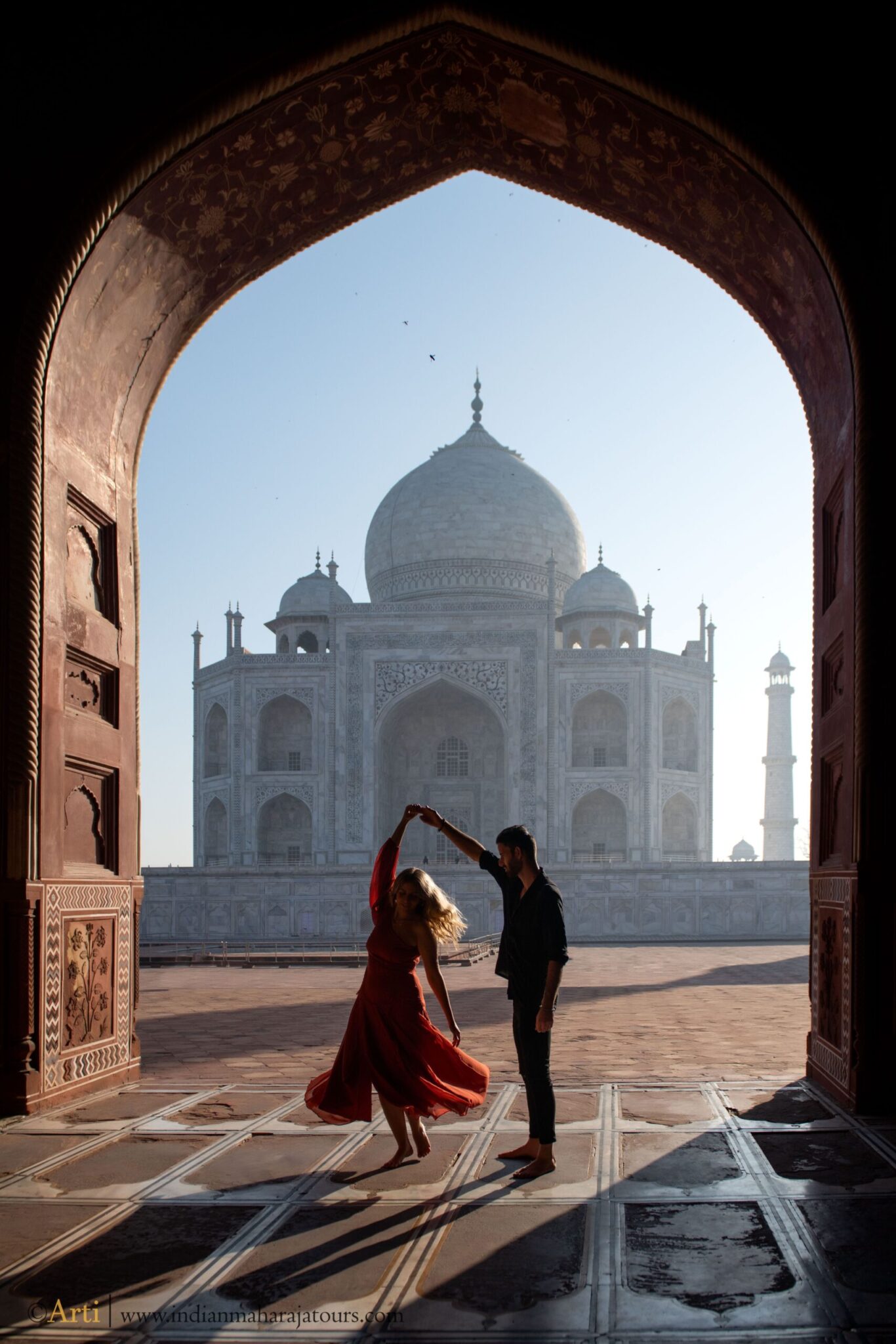
Unveiling the Best Wedding Destinations in India: Where Love Meets Culture and Tradition
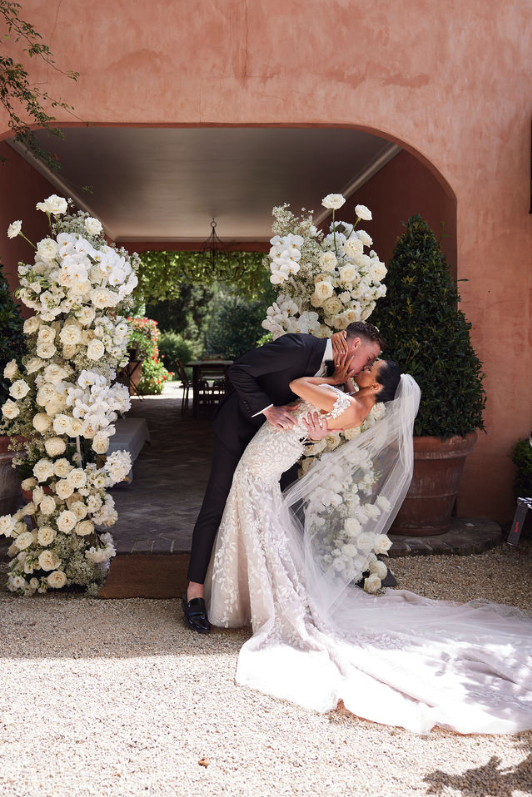
Tuscan-Inspired Hunter Valley Wedding: Olivia & Lachlan Sutherland
Join our mailing list.
Descriptive Essay on Wedding Ceremony
Weddings are fun times with lots of music, dance, parties, and fun activities. They also bring together friends, relatives, and acquaintances. Many weddings are held at night; the area is lined with colorful lights, belts, and other decorative items. People are clamoring for their expensive and luxurious clothes. Those from the groom’s side try to take on special significance.
Marriage is a beautiful social event in our society. It is a way of establishing new bonds between two people and families. Preparations for the wedding begin shortly after completing the negotiations between the two families. The house is being cleaned, and the wedding arrangements are complete.
Orders are placed for decorations and wedding dresses. Arrangements were made for a lavish dinner and a place for the groom’s wedding. Luxury invitation cards are printed and sent to friends and relatives well before the event. Two or three days before the ceremony, the house ladies sing and dance in a circle called the ladies sangeet.
A large tent is set up outside the bride’s house on the wedding day. Those who can afford to buy rent a banquet hall or a farmhouse. It is decorated with colorful lanterns, flowers, and other decorative items. Friends and relatives gathered around the bride and helped her get dressed in her wedding gown and jewellery. Her hands and feet were adorned with henna mehndi.
Friends and relatives gather at the groom’s home and participate in the sehra-bandi ceremony. A pink veil was tied around the bridegroom’s head at the ceremony while he sang religious verses. A beautifully decorated mare or car stands outside her house. You ride a horse or glean in a car with great joy. The ladies sing the bride’s songs.
The wedding procession begins at the bridegroom’s house. It was preceded by a band playing all the latest songs. Bands are all wearing uniforms. A handful of men carrying petromax also accompany the procession.
In some places, portable tube lights, which run on generators, are used. Young friends and relatives of the bridegroom dance to a drum and music beat. Some parades also feature fireworks displays. In rural areas, people are firing their guns into the air.
The procession was welcomed at the bride’s father, brother, and uncle of the bride with great fanfare. Members of the caravan decorated with flowers. The bride’s mother received the bridegroom with a plate of illuminated clay lamps. She also gives gifts to the groom.
The wedding party is escorted inside the tent and set up neatly. They were given drinks. The bridegroom is seated on a lofty throne and is adorned with a throne. Soon the bride arrived. She is wearing her shiny wedding dress. Embarrassed, he climbed onto the platform. When the bride and groom exchange flowers. Everyone claps and is happy. There is a competition between family members for photography with the bride and groom.
The bride’s father then invited everyone to the meal. Some people leave immediately after receiving their food. Some family members and friends were left to return and see the actual wedding ceremony.
The bride and groom sit in front of a fire under a beautiful flower arrangement. The researcher helps them to perform the rituals. Then they surrounded the fire seven times. The pundit makes them repeat certain words of the oath. They contain the solemn promise to remain faithful to each other in life. Thus marriage is performed.
The bride and groom prepare to leave after seeking the blessings of all the elders. This is called a doll festival. A very modest event. Almost everyone is in tears. The bride leaves her parents’ home. He sits in a decorated car and walks to his new home. Everyone wishes the newlyweds a happy, happy, and prosperous future.
Download Pdf of Descriptive Essay on Wedding Ceremony
If you want to download the Descriptive Essay on Wedding Ceremony PDF, you can click on the given link; it is free of cost.
- Descriptive Essay on Food festival | 500-600 words | Free PDF
- Descriptive Essay on My school 800-900 words | Free PDF
8 thoughts on “Descriptive Essay on Wedding Ceremony in 600-700 words | Free PDF”
Thank you for taking the time to read our blog! We hope that you found it helpful. If so, please leave a comment or rating below, and share this blog with your friends on social media. Thank you again for reading!
Wow so encouraging and amazing
Thank you for your feedback
Thanks for this reading blogs, If you have any related query from this blog then you can comment below this blog.
Okay it’s kind of good keep up the good work
Thanks for your positive feedback! I’m grateful for your encouragement. I’ll keep up the good work!
same it was so effective
Thank you for visiting our website. We appreciate your presence and interest in our platform.
Leave a Comment Cancel Reply
Your email address will not be published. Required fields are marked *
Save my name, email, and website in this browser for the next time I comment.
Notify me of follow-up comments by email.
Notify me of new posts by email.

How To Describe A Wedding In A Story (100+ Examples & Guide)
Weddings make magical moments in your story, essay, or other writing.
Here is how to describe a wedding in a story :
Describe a wedding in writing by capturing the essence of the ceremony, the emotions of the couple and guests, and the unique atmosphere of the venue, all while weaving in the cultural and personal details that make each wedding unique.
Keep reading to learn everything you need to know about portraying the magic of weddings in your stories.
Types of Weddings to Describe in a Story

Table of Contents
As you probably know, there are more than one type of wedding.
Here are some of the most popular types you can include in your stories.
Traditional Wedding
A traditional wedding is steeped in customs and rituals that have been passed down through generations
These weddings often take place in religious settings, with formal attire and a solemn atmosphere. The bride walks down the aisle accompanied by her father, while the groom waits at the altar.
Vows are exchanged, rings are placed on fingers, and the couple shares their first kiss as married partners.
Beach Wedding
Imagine saying “I do” with toes buried in the warm sand and waves crashing gently in the background.
A beach wedding is casual yet breathtakingly beautiful. Delicate seashell decorations line an arch under which the newlyweds stand for their vows. Sun-kissed guests can enjoy a relaxed celebration adorned with tropical flowers and soft music floating through the salty air.
Garden Wedding
In a garden wedding, nature becomes an enchanting backdrop for love to unfold.
Surrounded by blooming flowers and lush greenery, couples exchange vows under an elaborately decorated archway or rose-covered gazebo. The natural serenity of chirping birds adds charm to this intimate affair as guests bask in a whimsical atmosphere created by twinkling fairy lights strung between trees.
Destination Wedding
Destination weddings are celebrations held in a location away from the couple’s hometown, often in exotic or scenic places.
They offer a unique opportunity for couples to exchange vows in a memorable setting, from historic European castles to tropical Caribbean beaches. These weddings can also provide an exciting travel experience for guests.
Cultural Wedding
Cultural weddings celebrate the unique traditions and customs of a couple’s heritage.
These ceremonies are often rich in rituals that honor the couple’s cultural background, whether it be an Asian, African, Middle Eastern, or another heritage. Cultural weddings are a beautiful display of heritage, often featuring traditional attire, music, and ceremonies.
Modern Wedding
Modern weddings break away from traditional norms and often incorporate contemporary elements.
They may feature non-traditional venues, personalized vows, and modern decor. Technology, unique themes, and a more relaxed approach to planning characterize these weddings. Modern weddings reflect the couple’s personality and contemporary lifestyle.
Vintage Wedding
Vintage weddings are inspired by elements from a specific era in the past, like the Roaring Twenties or the Victorian period.
These weddings often feature antique-style decor, classic vehicles, and attire that reflects the chosen time period. Vintage weddings are perfect for couples who appreciate the charm and elegance of bygone eras.
Rustic Wedding
Rustic weddings are characterized by their natural, simple, and countryside-inspired elements.
They often take place in rural settings like barns, farms, or vineyards.
Decor includes natural textures like wood and burlap, and the ambiance is cozy and down-to-earth, reflecting a love for the rustic, outdoor charm.
Eco-Friendly Wedding
Eco-friendly weddings focus on sustainability and minimizing the environmental impact of the celebration.
These weddings use eco-conscious materials, local and organic food, and natural decor. Eco-friendly weddings are perfect for environmentally conscious couples who want to celebrate their love while respecting nature.
An elopement is a small, intimate wedding, often involving only the couple, a witness, and an officiant.
Elopements focus on the couple’s commitment without the extensive planning or guest list of a traditional wedding.
They can be spontaneous or planned and often occur in unique or meaningful locations to the couple.
How to Describe Traditional Weddings
Let’s start with how to describe the most common type of wedding.
Elements of Traditional Weddings
Traditional weddings are steeped in rich cultural and religious customs, each with their own unique elements.
These ceremonies often begin with a formal procession, where the bride is escorted down the aisle by her father or another significant family member.
The guests eagerly await her arrival, standing respectfully as she walks towards the altar.
Once at the altar, traditional weddings typically include a heartfelt exchange of vows between the bride and groom.
This deeply personal moment allows them to publicly declare their commitment and love for one another.
Following this emotional exchange, rings are exchanged as symbols of eternal unity and devotion.
After the exchange of rings comes one of the most iconic moments in a traditional wedding: the first kiss as a married couple.
This simple gesture signifies not only their union but also serves as an expression of love and affection witnessed by all those present.
Cultural Customs
Beyond these universal traditions, many cultural nuances can be observed at traditional weddings.
From vibrant Indian ceremonies filled with colorful attire and intricate rituals to elegant Chinese tea ceremonies symbolizing respect for elders – there is no shortage of diversity in how unions are celebrated around the world.
Some cultures emphasize specific customs such as breaking glass (a Jewish tradition) or exchanging leis (a Hawaiian custom), adding depth and meaning to these once-in-a-lifetime events.
Regardless of location or religion, traditional weddings consistently offer moments that celebrate love while showcasing individuality through various cultural practices.
Traditional Wedding Writing Examples
- The grand cathedral’s stained glass windows cast a kaleidoscope of colors over the bride as she gracefully walked down the aisle.
- A string quartet played classical melodies, adding an air of solemnity and tradition to the ceremony.
- The groom, dressed in a classic black tuxedo, waited nervously at the altar, his eyes lighting up as he saw his bride.
- Guests, dressed in formal attire, whispered in admiration of the ornate decorations and the couple’s adherence to time-honored traditions.
- The couple exchanged vows in a time-honored manner, their voices trembling with emotion as they promised to love and cherish each other.
- The church bells chimed melodically, signaling the start of the traditional wedding ceremony.
- Guests turned as the bride, clad in a classic white gown with lace detailing, gracefully walked down the aisle.
- The scent of fresh lilies and roses filled the church, enhancing the sacredness of the occasion.
- A hush fell over the attendees as the couple exchanged time-honored vows, their voices echoing in the grand hall.
- The groom, dressed in a sharp black suit, gazed lovingly at his bride, a symbol of their impending union.
- The couple’s hands joined, symbolizing unity, as they slid wedding bands onto each other’s fingers.
Describing the Wedding Venue: Setting the Scene
Once you step into the wedding venue, you are transported to a fairytale setting.
Vibrant flowers adorn every corner, creating an enchanting atmosphere.
The soft glow of fairy lights illuminates the space, casting a romantic ambiance that is simply breathtaking.
The ceremony takes place in a beautiful garden with towering trees providing shade and adding to the intimate feel of the occasion.
A flower-covered arch frames the bride and groom as they exchange their vows under a canopy of twinkling stars.
Guests gather in an exquisite ballroom for the reception.
Crystal chandeliers hang from high ceilings, casting shimmering light onto elegant tables adorned with delicate centerpieces and sparkling tableware. The dance floor has been crafted with care, gleaming like moonlit water inviting guests to celebrate love and happiness throughout the night.
Wedding Venue Writing Examples:
- The grand ballroom shimmered under the glow of crystal chandeliers, setting a majestic tone for the wedding.
- Lush greenery and blooming flowers encircled the garden venue, creating a natural and enchanting atmosphere.
- The rustic barn was adorned with twinkling fairy lights and delicate draperies, blending elegance with country charm.
- Overlooking the ocean, the cliffside venue offered a breathtaking panorama, perfect for a serene wedding.
- The historic mansion’s ornate architecture and sprawling lawns provided a backdrop of timeless elegance.
- A canopy of stars illuminated the open-air rooftop venue, offering a romantic and urban setting for the ceremony.
- The quaint countryside chapel, with its stained glass windows and wooden pews, exuded a warm, intimate ambiance.
- Majestic mountains surrounded the outdoor venue, providing a spectacular and dramatic backdrop for the nuptials.
- The modern art gallery, with its minimalist decor and contemporary art pieces, set a chic and sophisticated stage.
- The vineyard’s rolling hills and rows of grapevines created a picturesque and tranquil setting for a romantic wedding.
Capturing the Bride’s Beauty: Dress, Hair, and Makeup
The bride’s radiant beauty shone through her carefully chosen ensemble.
Her dress, a flowing masterpiece of lace and silk, hugged her curves in all the right places. Every intricate detail was meticulously crafted to enhance her elegance and grace.
Her hair was swept up into an elaborate updo adorned with delicate flowers that matched the vibrant blooms in the venue.
Each strand was meticulously styled to create a look of effortless glamour.
As she walked down the aisle, her hair swayed gently with each step, adding an ethereal quality to her presence.
Completing the picture-perfect look was her flawless makeup.
A subtle palette brought out her natural features while accentuating her best qualities.
The soft glow on her cheeks highlighted her cheekbones, while shimmering eyeshadow made her eyes sparkle with joy and anticipation.
With every element flawlessly executed – from the elegant dress to intricately styled hair and expertly applied makeup – this beautiful bride exuded confidence as she embarked on this new chapter of life alongside love ones.
Bride Description Examples:
- The bride glowed radiantly in her elegantly fitted gown, adorned with delicate pearls and fine lace detailing.
- Her eyes sparkled with joy, accentuated by the soft, natural makeup that highlighted her innate beauty.
- Cascading curls framed her face gently, with a few stray tendrils dancing in the light breeze.
- The bride’s smile, warm and infectious, lit up the room, reflecting her inner happiness and excitement.
- Graceful in her movements, she seemed to glide rather than walk, her gown flowing beautifully behind her.
- A traditional veil, intricately embroidered, cascaded over her shoulders, adding an air of mystery and elegance.
- Her bouquet of wildflowers and roses complemented her gown, adding a touch of vibrant color to her bridal look.
- The sunlight caught the subtle shimmer of her dress, making her appear as if she were surrounded by a soft, ethereal glow.
- Nervous yet excited, her hands delicately clutched the bouquet, her fingers adorned with a simple, elegant ring.
- Poised and serene, she exuded a sense of timeless grace, a vision of classic beauty on her wedding day.
The Groom’s Dashing Appearance: Attire and Accessories
The groom, adorned in a sophisticated black tuxedo, exudes elegance as he stands at the altar.
His jacket fits him perfectly, accentuating his broad shoulders and trim waistline. The crisp white shirt beneath contrasts beautifully with the deep shade of his suit.
A sleek satin tie completes his ensemble, its bold color adding a touch of personality to his formal attire.
As he glances down at himself, one can’t help but notice the gleaming silver cufflinks adorning each wrist – small accents that add a dash of sophistication.
Completing the groom’s look are polished leather shoes that shine under the venue’s light.
With every step down the aisle, their sturdy yet elegant appearance adds an air of confidence to his stride. Overall, through careful attention to detail in both clothing and accessories, this groom is undoubtedly a picture of refined style on this special day.
Groom Description Examples:
- The groom stood tall and confident, his tailored black tuxedo fitting him impeccably, enhancing his dignified appearance.
- A hint of nervous excitement twinkled in his eyes as he awaited his bride, his smile broad and genuine.
- His hair was styled neatly, adding to his polished and refined look, perfect for the grand occasion.
- A sleek, silver tie clip and matching cufflinks added a touch of sophistication to his classic black suit.
- The groom’s shoes, polished to a high shine, clicked softly against the floor as he shifted his weight, eagerly anticipating the ceremony.
- A boutonniere of fresh, deep-colored blooms adorned his lapel, echoing the floral theme of the wedding.
- His posture, upright and composed, exuded a sense of readiness and joy for the lifelong commitment ahead.
- The warmth in his expression softened as he caught the first glimpse of his bride, his love and adoration palpable.
- He shared light-hearted banter with his groomsmen, his laughter ringing out, easing the pre-ceremony tension.
- As the ceremony commenced, his hands, though steady, revealed a subtle tremor, betraying the depth of his emotions on this momentous day.
The Ceremony: Emotions, Vows, and More
We can’t leave out describing the ceremony.
Weddings are filled with a rollercoaster of emotions.
As the couple takes their vows, joy and excitement radiate from their faces.
The guests can’t help but smile as they witness this celebration of love.
Tears glisten in the eyes of parents as they give away their child to a new life partner. A feeling of nostalgia is met with hope for the newlyweds’ future.
Vows are promises made by the couple to each other, spoken from the heart.
They declare their unconditional love, devotion, and commitment. These words carry immense emotional weight and have been passed down through generations as a timeless tradition.
As each vow is uttered, an air of anticipation fills the room, reminding everyone present that these heartfelt promises will shape the foundation of lifelong happiness.
Examples of Describing the Ceremony:
- The venue was adorned with colorful flowers and soft candlelight.
- The bride looked radiant in her flowing white gown.
- Guests were seated on elegant chairs, facing a beautiful altar.
- The groom stood nervously, waiting for his bride to arrive.
- The music played softly in the background, setting the mood.
- The officiant spoke heartfelt words about love and commitment.
- Rings were exchanged, symbolizing their eternal bond.
- Tears of joy and laughter filled the air.
- The newlyweds sealed their vows with a kiss.
- Applause and cheers erupted as they walked back up the aisle.
The Wedding Traditions
Weddings are steeped in tradition, bringing together customs and rituals from various cultures around the world.
These traditions add depth and meaning to a wedding ceremony, making it a memorable event for all involved.
Here are a few common wedding traditions you might want to describe:
- The White Dress : A popular tradition in Western weddings is for the bride to wear a white dress. Symbolizing purity and innocence, this tradition dates back centuries.
- The Procession : At the start of the ceremony, the bridal party walks down the aisle in a specific order, with each member playing an important role. This procession sets the stage for the bride’s grand entrance.
- Exchanging Rings : During this pivotal moment in any wedding ceremony, couples exchange rings that symbolize their love and eternal unity.
These wedding traditions may vary depending on cultural or religious backgrounds but serve as beautiful reminders of love and celebration.
The Wedding Photographs & Video
Capturing the essence of a wedding day, photographs and videos provide lasting memories for couples and their families
A skilled photographer will document each precious moment – from the bride getting ready to the exchanging of vows and the heartfelt speeches at the reception.
These visual mementos freeze time, allowing everyone to relive the joyous occasion for years to come.
Images crafted with expertise can showcase both candid moments – like giddy laughter and heartfelt embraces – as well as carefully posed shots that emphasize the beauty of the venue, decorations, and attire.
By incorporating various angles, lighting techniques, and artistic perspectives, photographers create a visually stunning narrative that tells the unique story of every couple’s big day.
Videos capture not only still shots but also movement, voices, music, and genuine emotions in real-time.
Skillful videographers fuse these elements together to create a seamless cinematic experience.
Through clever editing techniques that synchronize visuals with audio snippets such as vows or speeches, they craft an emotional journey that elicits tears of happiness when watched later.
Photographs are often given pride of place on mantelpieces or adorning walls in albums which bring back cherished memories whenever they’re opened.
Videos offer a more immersive experience by letting viewers rewatch every step down memory lane during anniversaries or family gatherings.
Think about how to describe the photographer, videographer, and their actions during the ceremony.
Here are examples of how to describe the wedding photos and video:
- The photographer captured candid moments of laughter and tears.
- The videographer recorded the exchange of vows for posterity.
- Group shots froze memories of the bridal party’s joy.
- A drone soared to capture stunning aerial views of the ceremony.
- The couple posed against a breathtaking sunset backdrop.
- Close-ups highlighted the intricate details of the wedding attire.
- The photo booth churned out snapshots of guests’ merriment.
- The slideshow played a montage of the couple’s journey together.
- The photo album told the story of their special day.
- The video montage edited together the most touching moments.
Writing Wedding Dialogue: Conversations and Speeches
Wedding conversations are filled with joy, anticipation, and a touch of nerves.
As guests mingle before the ceremony, their enthusiastic chatter fills the air.
- Couples in love can be heard whispering tender words to each other as they exchange vows.
- Family members excitedly discuss seating arrangements while trying to dodge last-minute mishaps.
- Friends share heartfelt anecdotes during speeches that bring tears of joy to everyone’s eyes.
The dialogue at a wedding is brimming with emotion and serves as an important tool for telling the story.
It can reveal characters’ relationships, showcase their personalities, and provide insight into their thoughts and feelings on this momentous occasion.
In a well-crafted wedding scene, conversations flow naturally, reflecting the excitement in the air.
Dialogues capture both intimate exchanges between loved ones and larger group interactions that create a warm atmosphere for all attendees. From whispered confessions to humorous banter during speeches, every conversation adds depth and color to the narrative tapestry of describing a wedding in a story.
Examples of Wedding Dialogue:
- The bride and groom exchanged heartfelt vows.
- The father of the bride gave a tearful speech.
- Friends shared humorous anecdotes during toasts.
- Guests whispered compliments about the couple’s love.
- The officiant’s words resonated with wisdom and warmth.
- Couples reminisced about their own love stories.
- Siblings playfully teased the newlyweds.
- The best man’s toast was lighthearted and touching.
- Guests gushed about the beauty of the ceremony.
- The couple’s gratitude and love shone through their words.
The Reception: Food, Decor, and Entertainment
One of the most important elements of a wedding to describe is the reception.
You might want to talk about the food, decor, and entertainment.
Here is an example:
The reception was a grand affair, filled with delectable food, exquisite decor, and lively entertainment.
As guests entered the venue, they were greeted by an elegant display of flowers that adorned every table.
The scent of succulent dishes wafted through the air as servers moved gracefully around the room. From tender steak to mouthwatering seafood, there was something for everyone’s tastes. Guests indulged in a delightful feast that left them craving for more.
A live band played enchanting melodies throughout the evening, creating an atmosphere of joy and celebration.
People laughed and danced under twinkling lights, their happiness radiating from their faces. The reception was truly a memorable event that showcased the couple’s love and delighted all who attended.
Wedding Reception Writing Examples:
- The dance floor was filled with guests showing their moves.
- Tables were adorned with elegant centerpieces and candles.
- The DJ kept the party alive with a mix of music.
- Waitstaff served delicious courses of gourmet cuisine.
- The couple made a grand entrance with confetti and cheers.
- Guests enjoyed a photogenic dessert table.
- The open bar served signature cocktails and fine wines.
- The reception hall was beautifully lit with fairy lights.
- A photo booth offered guests a chance for fun snapshots.
- The couple shared their first dance as a married couple.
How to Describe Modern Weddings: Capturing the Essence of Contemporary Celebrations
Wedding ceremonies and celebrations have transformed significantly in recent times.
Here’s a glimpse into describing modern weddings:
- Non-traditional settings: Modern couples are stepping away from conventional venues like churches or banquet halls, opting for unique locations such as vineyards, rooftops, or even private homes.
- Personalized touches: Today’s weddings often showcase personalization through customized vows, creative themes that reflect the couple’s interests and passions, and interactive elements like photo booths or food stations.
- Technology integration: In contemporary weddings, technology plays a significant role – digital save-the-dates and invitations are sent via email or social media platforms; live streaming allows distant loved ones to participate virtually; drones capture stunning aerial shots of the ceremony.
How to Describe Destination Weddings: Describing the Magic of Exotic Locations
Destination weddings offer couples a unique opportunity to exchange vows in breathtaking locations around the world.
- Captivating landscapes : Imagine standing on a pristine beach, with soft white sands slipping between your toes and crystal-clear turquoise waters stretching to the horizon. Set against such a picturesque backdrop, destination weddings allow couples to create unforgettable memories surrounded by nature’s beauty.
- Cultural immersion : From historic castles in Europe to vibrant temples in Asia, exotic destinations provide an immersive experience into different cultures and traditions. Guests can explore local customs, taste authentic cuisine, and partake in traditional activities that make their attendance at the wedding even more meaningful.
- Intimate celebrations : By opting for a destination wedding, couples often prioritize intimacy over grandeur. The smaller guest list fosters quality time with loved ones and encourages deeper connections among attendees. Instead of an overwhelming ballroom affair, these weddings exude warmth as they become cherished shared experiences.
Whether it’s exchanging vows on top of a breathtaking mountain peak or amidst ancient ruins steeped in history, describing the magic of exotic locations brings life to destination weddings’ allure and romance without being repetitive or overly elaborate.
Destination Wedding Description Examples:
- The ceremony took place on a pristine beach in the Bahamas.
- Guests traveled from different corners of the world.
- The couple exchanged vows under a tropical canopy.
- A luau-themed reception celebrated the destination.
- Seashell and starfish decorations adorned the tables.
- The couple embraced a relaxed, beachy dress code.
- Activities like snorkeling and island tours were included.
- The wedding photos showcased stunning ocean views.
- The couple’s love story was intertwined with their travels.
- A sense of adventure and wanderlust filled the air.
How to Describe Intimate Weddings: Portraying the Beauty of Small Gatherings
Intimate weddings possess a captivating allure, filled with an abundance of close-knit emotions and tender moments.
- In these intimate gatherings, love dances gracefully in each corner as only the dearest ones come together to celebrate.
- The atmosphere is enveloped in warmth and closeness, creating an unmistakable sense of intimacy that flows effortlessly through every interaction.
- These small-scale weddings paint a picture of serene elegance, where the focus lies solely on genuine connections rather than extravagant displays.
Capturing the essence of an intimate wedding requires weaving words delicately to evoke feelings of cherished intimacy and tranquility.
- Emphasize Meaningful Connections : Highlight how intimate weddings reflect deep bonds among loved ones who have gathered from near and far.
- Create a Sense of Serenity : Mention the calm ambiance that pervades these gatherings, allowing couples to exchange heartfelt vows in tranquil settings.
- Celebrate Personal Touches : Acknowledge how smaller guest lists enable couples to infuse personalized elements into every aspect – from decor to cuisine – ensuring their wedding truly becomes a reflection of their unique love story.
How to Describe Grand Weddings: Depicting the Extravagance and Opulence
When describing a grand wedding, it is important to vividly capture the extravagance and opulence that surrounds such an event.
Use sensory details to engage readers in the luxurious atmosphere.
Describe the lavish decorations adorning every corner of the venue – from cascading floral arrangements to shimmering chandeliers, painting a picture of wealth and beauty.
Highlight the grandeur of the bride’s attire – her exquisite gown adorned with intricate lacework and sparkling jewels.
Mention how each step she takes evokes elegance, accompanied by a subtle rustle of layers upon layers of silk fabric.
Discuss the groom’s stylish tuxedo, tailored impeccably to fit him like a second skin.
The readers should feel transported into this world through your words – enticed by the rich aromas wafting from tables embellished with silverware, crystal glasses, and delicate china plates.
Let them imagine savoring delectable courses prepared by renowned chefs serving culinary masterpieces on gleaming platters.
The ambience should be further emphasized through descriptions of live music played by talented musicians filling every corner with melodies that make hearts swoon. Paint a visual image of guests gliding across marble dance floors in perfect harmony as they celebrate love beneath dazzling lights that twinkle like stars.
Overall, evoke emotions such as awe and enchantment using eloquent language combined with detailed descriptions when depicting these extravagant weddings.
Lavish Wedding Examples:
- The venue was a grand palace with crystal chandeliers.
- Guests were greeted with champagne and caviar.
- The bride wore a couture designer gown.
- A live orchestra played classical music during the ceremony.
- The guest list included dignitaries and celebrities.
- The wedding favors were custom-made luxury gifts.
- An extravagant fireworks display lit up the night sky.
- The menu featured gourmet delicacies from around the world.
- The reception hall was transformed into a fairy tale ballroom.
- Every detail, from the invitations to the linens, exuded opulence.
How to Describe Outdoor Weddings
Outdoor weddings offer a unique blend of natural beauty and romantic ambiance.
They allow couples to exchange their vows under the open sky, amidst the splendor of nature.
Whether it’s a serene beachfront, a majestic mountain view, or the rustic charm of a countryside setting, outdoor weddings provide a picturesque canvas for your special day.
Here is an example to spark your creativity:
The sun casts its golden rays upon the meticulously manicured garden, enhancing the vivid hues of wildflowers that adorn every corner.
The gentle breeze carries with it a symphony of fragrances, mingling the sweet scent of blossoms and fresh grass.
As guests gather on elegant white chairs set amidst nature’s lush carpet, they are embraced by a picturesque backdrop of towering trees and rolling hills. Beyond the wedding altar constructed from intertwining vines and delicate blooms, a tranquil pond reflects the azure sky overhead.
Graceful swans glide across its glassy surface as if performing their own enchanting dance to celebrate this joyous union.
Sparkling fairy lights twinkle in harmony with nature’s own starry canopy as twilight slowly envelops the scene.
Guests indulge their senses further during an exquisite farm-to-table feast using locally-sourced ingredients—vibrant greens picked straight from nearby fields, succulent fruits plucked at perfect ripeness, and tender meat seasoned softly with herbs grown right here—a gastronomic journey designed to reflect not only love but also reverence for Mother Earth herself.
How to Describe Unique Weddings: Showcasing Unconventional Celebrations
Unique weddings are a delightful way to celebrate love, filled with unexpected and refreshing elements.
From the venue to the rituals, these unconventional celebrations create lasting memories for both couples and guests.
- Location : Instead of traditional venues like banquet halls or churches, unique weddings may take place in breathtaking settings such as lush gardens, rustic barns, or even on a mountaintop. The location sets the stage for an enchanting experience that captures the couple’s personalities and passions.
- Themes and Decor : Unlike conventional weddings, unique celebrations often embrace creative themes that reflect who the couple is as individuals. Whether it’s a vintage carnival theme complete with cotton candy machines or an elegant masquerade ball with extravagant masks adorning every table setting, these wedding decors tell stories that transport guests to another world.
- Ceremony Traditions : Instead of following traditional ceremonies step by step, unique weddings may incorporate custom rituals inspired by different cultures or personal beliefs. It could be a handfasting ceremony symbolizing unity through binding hands with ribbons or exchanging personalized vows while their favorite song plays softly in the background.
Examples of Describing Unique Weddings:
- The wedding was held in a historic, converted barn.
- The couple arrived on horseback, dressed in rustic attire.
- The ceremony featured a candle-lit labyrinth for guests.
- A live painting artist captured the ceremony’s essence.
- The couple incorporated their love for cosplay into the theme.
- The reception doubled as a masquerade ball.
- A food truck served gourmet tacos and sliders.
- A flash mob surprised guests with a choreographed dance.
- The couple’s dog served as the ring bearer.
- The wedding favors were personalized, handmade crafts.
Genre-specific Wedding Descriptions: Romance, Comedy, Drama
I thought I’d add these genre-specific examples of how to describe a wedding in writing.
Romance Genre Wedding Description
The romantic ballroom buzzed with anticipation. Soft candlelight danced on the walls, as the bride descended the grand staircase in her ivory gown adorned with delicate lace. The groom stood at the altar, his eyes shimmering with love and excitement.
The ceremony began amidst a symphony of heartfelt vows and whispered promises. Tears flowed freely as guests witnessed these two souls unite in eternal devotion. Love filled every corner of the room, wrapping everyone in its warm embrace.
Following the “I dos,” old friends and new acquaintances mingled over glasses of champagne, creating an atmosphere charged with laughter and joy. As day turned into night, couples swayed to dreamy melodies under a canopy of stars, celebrating true love that would endure for all eternity.
Comedy Genre Wedding Description
Bob’s wedding was far from ordinary – it was hilariously chaotic! Right from the start, everything went wrong: flower girls tripped over their oversized skirts while ring bearers ran off chasing butterflies!
Even during the vows, mishaps ensued – Bob clumsily mispronounced his wife’s name causing an eruption of giggles throughout the crowd.
But instead of fretting about perfection, they embraced these humorous moments wholeheartedly.
As evening fell, astounding dance moves took center stage as grandmas outshined professional dancers and uncles showcased never-before-seen disco skills. It was an uproarious celebration that left everyone rolling on the floor laughing – certainly a memorable event for years to come!
Drama Genre Wedding Description
In a dimly lit cathedral shrouded in mystery and melancholy, Sarah walked down an aisle lined with somber faces dressed in black attire. Bride and groom exchanged solemn glances while exchanging vows laden with both hope and sorrow.
Intense emotions crackled through every heartbeat as whispers echoed around them like distant thunder.
Each word spoken seemed suspended in time as if carrying within it not just their future but also the weight of past mistakes and lost opportunities.
The day unfolded with an air of melancholy splendor, every gesture heavy with symbolism. It was a wedding that vividly portrayed the complexities of human existence – a celebration not just of love but also of life’s profound mysteries.
Check out this video on how to describe a wedding in a story you write for school:
Final Thoughts: How To Describe A Wedding In A Story
Capturing a wedding in writing is like painting a vivid picture with words, bringing every heartfelt moment to life.
For more creative insights and tips, explore other articles on our website.
Read This Next:
- How To Describe A Classroom In Writing (21 Tips + Examples)
- How To Describe A Crowded Place In Writing (21 Best Tips & Examples)
- How to Describe Love in Writing (21 Best Tips + Examples)
- How To Write a Query Letter for a Romance Novel (13 Tips)
Best Descriptive Essays: Examples & How-to Guide [+ Tips]
A descriptive essay is an academic paper that challenges a school or college student to describe something. It can be a person, a place, an object, a situation—anything an individual can depict in writing. The task is to show your abilities to communicate an experience in an essay format using vivid, illustrative language.
Our specialists will write a custom essay specially for you!
To understand how to write this paper, you’ll need to study some descriptive essay examples for college. Besides, you need to contemplate these aspects:
- how someone or somewhere looks;
- what happens with the person or place;
- what historical record you can add, if at all possible.
Our team has prepared this guide so that you’ll manage to write a famous descriptive essay. Learn how to outline your paper, nail the structure and the thesis statement. See the tips and explanations below, along with descriptive essay samples.
- 🖌️ Why Descriptive?
Research & Prepare
Outline your essay, write descriptively, revise & polish.
- 🖼️ Essay Examples
🖌️ What Makes an Essay Descriptive?
It’s time to make clear what we mean by a descriptive essay . For example, let’s suppose we were asked to write about a sports stadium. Here are two introductions we might come up with:
Example 1: A stadium is a place where sports, concerts, or other events take place. Usually, there will be a field or a stage, which most often will be surrounded completely or partially by a structure where spectators can sit or stand to watch.
Example 2: American sports nuts got what was probably their first sight of Twickenham rugby stadium when the Rugby World Cup Final was played there in 2015. Rugby has been played at Whitton Road in Twickenham since 1907, and the first international match took place three years later in 1910; when no game was scheduled, horses grazed the pitch. What is now the shining steel and glass double-decker West Stand was still, in the 1960s, a car park. Currently one of the world’s most state-of-the-art grounds, Twickenham holds 82,000 people, and it’s no longer horses when rugby is not being played but world-famous bands like U2, The Rolling Stones, and Bon Jovi who fill the place.
The first introduction is excellent for analytical essays as it’s a definition of what a sports stadium is. The second one depicts a specific stadium, and that – that act of describing – is what makes it descriptive.

When you’re writing a descriptive essay, it’s the style of the second example and not the first that you should be striving for. Try to use living, vivid language to draw a picture in words of whatever it is you’re writing about.
Just in 1 hour! We will write you a plagiarism-free paper in hardly more than 1 hour
🎨 How to Write Good Descriptive Essays
When you’re writing a paper, the standard advice would be:
- Say what you’re going to tell your reader.
- Say what you’ve told your reader.
The same fundamental structure applies to a descriptive essay. Yet, there are numerous nuances that you should keep in mind to produce an outstanding paper. In the following sections, we’ll elaborate on them in detail.
So, you are ready to write your excellent descriptive essay, but you don’t know how to start? Don’t be lost. While writing any kind of paper, start with the research and preparation. Take a look at our tips!
- Consider the topic that you’re working with. Whether it’s assigned or picked by you, make sure you understand it completely. Make sure that it’s a descriptive essay that you’re supposed to write.
- Have a brainstorming session. Jot down some notes on what you think about the matter. Some of them will be useless, but it’s okay: among all the ideas, you’ll find something useful for your paper.
- Do some research. Find out what other people think about the place or event, if possible. Make notes about essential historical facts and people’s opinions.
- Add details. A good descriptive essay should be full of specifics. So, include background information, dates, names, physical characteristics, etc. This trick will help the reader to dive deep into the story and get the idea better.
- Are you going to go with your perspective?
- Are you going to go with other people’s opinions?
- Would the best result for this particular essay come from weighing the options? (So, you’d write, “Some people think this and some people believe in that ).
After all these steps, you’ll have enough material to create your descriptive essay structure.
When you have enough facts and memories, you can move on to the next step – outlining. We highly recommend you create an outline before you start writing an essay. It will help you to structure your ideas logically and coherently.
Receive a plagiarism-free paper tailored to your instructions. Cut 20% off your first order!
Your essay outline should include the following elements:
- Introduction . A good introduction should be catchy and concise. Start with the hook—an attention-grabbing element (rhetorical question, joke, statistics, etc.). Then, provide the general background and highlight the issues your essay will cover. End your intro with a clear thesis statement—a sentence that reflects your position.
- Body paragraphs . Each body paragraph should contain only one idea and start from the topic sentence, so the reader knows what to focus on. Make your body paragraphs full of details and specific examples. Don’t be too general because you risk losing the reader’s attention very fast.
- Conclusion . Wrap up your essay by restating the main points and summarizing your key ideas. Don’t include any new facts in the last paragraph. If you suspect that you miss an essential argument, better add it in the body.
Besides having a good structure, the best descriptive essay should be composed of strong and dynamic words. In this section, we will explain how to make your paper illustrative and memorable.
To make your writing descriptive , try the following:
- Choose your POV.
Decide who is the narrator of your story and filter the vocabulary through the narrator’s perspective. For example, you are describing your memories of childhood. Thus, your character is a child. Think how the kid’s perception of the world differs from reality and try to convey the feelings using appropriate words. Note that you can still write in the third person.
- Rely on precise words.
Avoid too abstract terms and general words. Instead, use dynamic vocabulary that precisely conveys your feelings. For example, you might write, “I felt bad.” Let’s make it more specific! How about writing, “I felt exhausted/ horrified/ anxious/ sick/ stressed, etc.”?
Get an originally-written paper according to your instructions!
- Use figures of speech.
Don’t forget about the wide variety of literary devices! Use comparisons, metaphors, onomatopoeia, or exaggeration. You might say, “my girlfriend has beautiful eyes.” But Shakspeare would say. “My mistress’ eyes are nothing like the sun” ( Sonnet, 130 ). Strive to be this creative!
- Keep connotations and variations in mind.
Use the richness of the language to improve your creative writing skills. English is full of synonyms and various grammar structures. Take the maximum benefit from them. BUT! Avoid using the word if you are unsure about its meaning.
- Compare and contrast.
Nothing can help to describe things better than comparison. So, deepen your sentences by examining the contrast and similarities between the objects or emotions.
- Implement sensory details.
Do you remember the five basic human senses? They are sight, hearing, taste, touch, and smell. Rather than just telling the story, try to appeal to the reader’s five senses. This trick will help you to make the audience more engaged in your narrative.

When you reach the end, you haven’t finished. What you’ve done is to create the first version of your descriptive essay. Professional writers know how vital the first draft is because it isn’t possible to edit a blank page.
To revise and polish your text, follow these steps:
- Check the structure. Your essay has to contain all the fundamental parts (introduction, main body, conclusion). Also, make sure that there are transitions between the key points and topic sentences at the beginning of each paragraph.
- Check the balance. All the essay parts should be approximate of the same significance. Keep in mind that each point should have the same number of details and arguments.
- Make sure you explored all the points. Read your introduction, paying extra attention to the thesis statement. Then, look through the entire essay and check whether you discussed every aspect you introduced in the first paragraph.
- Examine your information. Every piece of data and detail has to be valid. Make sure your arguments are logical, and your examples are appropriate. If something seems weak, rewrite it or consider cutting that part down.
- Polish your conclusion. The last paragraph of your essay should correspond to the introduction. Moreover, it should summarize your points and make a final impression on the reader. Make your conclusion memorable and dynamic.
You may go through this revision and rewriting process several times. Or you may become so skilled at writing descriptive essays that you’re good to go after the first revision.
🖼️ Famous Descriptive Essay Examples
Now that we’ve discussed how to write a descriptive essay, we should tell you the last crucial tip. Your chances of composing a perfect paper are low when you don’t check the samples first.
Here, you can find specific descriptive essay examples in these guides:
- Coral Reef Essay :
Do you admire wildlife? Are you fascinated by the divine beauty of the sea and ocean creatures? If you have a task to write about nature, or you can choose the topic yourself, think about composing a descriptive essay about coral reefs!
- Harriet Tubman Essay :
Do you need to talk about an outstanding historical figure? Or you need to compose a descriptive essay about a person? Choose an American political activist Harriet Tubman. Her biography and achievements won’t leave you indifferent!
- Americanism Essay :
Americanism is one of the most common paper topics for college students in the U.S. Has your instructor gave you the assignment to write about the USA identity? Compose a descriptive essay on Americanism!
- Halloween Essay :
Everybody loves holidays! And the teachers like to give the tasks to write about them. If you are wondering what celebration to select, consider choosing Halloween. It offers a bunch of traditions to describe.
Descriptive Essay Topics
- Description of punk culture .
- The beauty of Dresden .
- Give a description of Sweetbay Magnolia ornamental tree.
- Memorable design of Apple Company’s logo .
- Representation of emotions while viewing art or nature .
- Describe the Paricutín volcano .
- Give a description of Diana Krall’s concert at Jazz Festival in San Sebastián .
- Compare the interior and exterior of the Palatine Chapel and St. Michael’s Chapel .
- Discuss the design principles and visual elements of the Baptistery of San Giovanni’s south doors .
- The unusual style of the Graduate House of the University of Toronto .
- The description of the Jewish religious service.
- The magnificence of the Great Barrier Reef in Australia .
- The overview of my dream car .
- Discuss the design of Britam Tower in Nairobi .
- An exceptional scenery of the Lake Geneva, Switzerland.
- Description and analysis of the film The Joker .
- The day I was buying a laptop .
- Give a description of main types of friendship .
- Main holidays in Pakistan and how they are celebrated.
- The historical atmosphere of Ellis Island .
- The unique culture of Cook Island inhabitants.
- Describe the impressions of the picture .
- Describe traditions and culture of the Kootenai Indians .
- What does my dream home look like?
- Discuss the visual elements of Lady Sennuwy statue .
- Balinese wedding ceremonies and traditions.
- Recount your first day at college .
- Describe and analyze Susan Anthony’s life and achievements .
- The unique beauty of the Amazon rainforest .
- The important elements of the Haitian flag .
- Values and specifics of Brazilian culture .
- The magnificence of Shark Valley .
- Describe the activities and personality of Eleanor Roosevelt .
- Describe the writing process .
- The peculiarities of a tapa and it’s role in cultural ceremonies.
- Give the description of the statue of Osiris-Antinous .
- Discuss the Ways of Christmas Sweater Day celebration.
- What impresses you the most in Cézanne’s art .
- Description of Atlantis Paradise Island site .
- Describe the peculiarities of your favorite music .
- Analyze the characteristics of contemporary design in Evolution Queen Wall Bed .
- Movements, symbolism, and transformation of the Chinese Dragon Dance and Lion Dance .
- Describe the falling in love process.
- Narrate about your first try to ride a bicycle .
- Representation of the ancient Greek design: the marble column from the Temple of Artemis at Sardis .
- Discuss the thematic elements of Indian Fire God painting by Frederic Remington .
- The personality and art of Tracey Emin .
- Describe the history of PayPal company .
- Describe the features and historical meaning of the Column of Trajan .
- Overview of the painting Toy Pieta by Scott Avett.
In case these ideas aren’t for you, you can find more descriptive essay topics on our website.
Thanks for visiting our page! Share it with your friends and explore the other articles on our website. We have more useful information for you.
🔗 References
- Descriptive Writing, Organization and Structure: Writing Center, Indiana University of Pennsylvania
- Examples of How to Write a Good Descriptive Paragraph: Richard Nordquist, ThoughtCo
- How Can I Write More Descriptively: Sweetland Center for Writing, College of Literature, Science, and the Arts, the University of Michigan
- Revising the Draft: Laura Saltz, the Writing Center at Harvard University
- Descriptive Essays: Purdue Writing Lab, College of Liberal Arts, Purdue University
- Paragraph Development, Organizing Your Social Sciences Research Paper: Research Guides at the University of Southern California
- Share to Facebook
- Share to Twitter
- Share to LinkedIn
- Share to email

A film analysis essay might be the most exciting assignment you have ever had! After all, who doesn’t love watching movies? You have your favorite movies, maybe something you watched years ago, perhaps a classic, or a documentary. Or your professor might assign a film for you to make a...

A critique paper is an academic writing genre that summarizes and gives a critical evaluation of a concept or work. Or, to put it simply, it is no more than a summary and a critical analysis of a specific issue. This type of writing aims to evaluate the impact of...

What is a creative essay, if not the way to express yourself? Crafting such a paper is a task that allows you to communicate your opinion and tell a story. However, even using your imagination to a great extent doesn’t free you from following academic writing rules. Don’t even get...

A compare and contrast essay — what is it? In this type of paper, you compare two different things or ideas, highlighting what is similar between the two, and you also contrast them, highlighting what is different. The two things might be events, people, books, points of view, lifestyles, or...

What is an expository essay? This type of writing aims to inform the reader about the subject clearly, concisely, and objectively. The keyword here is “inform”. You are not trying to persuade your reader to think a certain way or let your own opinions and emotions cloud your work. Just stick to the...
![descriptive essay on pakistani wedding Short Story Analysis: How to Write It Step by Step [New]](https://custom-writing.org/blog/wp-content/uploads/2020/12/man-sits-end-trolltunga-before-mountains-284x153.jpg)
Have you ever tried to write a story analysis but ended up being completely confused and lost? Well, the task might be challenging if you don’t know the essential rules for literary analysis creation. But don’t get frustrated! We know how to write a short story analysis, and we are...

Have you ever tried to get somebody round to your way of thinking? Then you should know how daunting the task is. Still, if your persuasion is successful, the result is emotionally rewarding. A persuasive essay is a type of writing that uses facts and logic to argument and substantiate...
![descriptive essay on pakistani wedding Common Essay Mistakes—Writing Errors to Avoid [Updated]](https://custom-writing.org/blog/wp-content/uploads/2020/12/avoid-mistakes-ccw-284x153.jpg)
One of the most critical skills that students gain during their college years is assignment writing. Composing impressive essays and research papers can be quite challenging, especially for ESL students. Nonetheless, before learning the art of academic writing, you may make numerous common essay mistakes. Such involuntary errors appear in:...

You’re probably thinking: I’m no Mahatma Gandhi or Steve Jobs—what could I possibly write in my memoir? I don’t even know how to start an autobiography, let alone write the whole thing. But don’t worry: essay writing can be easy, and this autobiography example for students is here to show...
![descriptive essay on pakistani wedding Why I Want to Be a Teacher Essay: Writing Guide [2024]](https://custom-writing.org/blog/wp-content/uploads/2020/12/senior-male-professor-writing-blackboard-with-chalk3-284x153.jpg)
Some people know which profession to choose from childhood, while others decide much later in life. However, and whenever you come to it, you may have to elaborate on it in your personal statement or cover letter. This is widely known as “Why I Want to Be a Teacher” essay.
![descriptive essay on pakistani wedding Friendship Essay: Writing Guide & Topics on Friendship [New]](https://custom-writing.org/blog/wp-content/uploads/2020/12/smiley-female-friends-fist-bumping-284x153.jpg)
Assigned with an essay about friendship? Congrats! It’s one of the best tasks you could get. Digging through your memories and finding strong arguments for this paper can be an enjoyable experience. I bet you will cope with this task effortlessly as we can help you with the assignment. Just...

When you are assigned an autobiography to write, tens, and even hundreds of questions start buzzing in your head. How to write autobiography essay parts? What to include? How to make your autobiography writing flow? Don’t worry about all this and use the following three simple principles and 15 creative...
All I want to say you is thanks very much for your post! Here are lots of ideas for my essay on a shopping mall. If I have any difficulties with my paper, I will use your writing service.
Cool post with cool tips for writing opinion essays on a shopping mall! I’m so glad that I found this blog! Thanks for creating it!
Can I speak with my essay writer directly?
What if i can’t write my essay.
Customer Reviews
Megan Sharp
Once I Hire a Writer to Write My Essay, Is It Possible for Me to Monitor Their Progress?
Absolutely! Make an order to write my essay for me, and we will get an experienced paper writer to take on your task. When you set a deadline, some people choose to simply wait until the task is complete, but others choose a more hands-on process, utilizing the encrypted chat to contact their writer and ask for a draft or a progress update. On some occasions, your writer will be in contact with you if a detail from your order needs to be clarified. Good communication and monitoring is the key to making sure your work is as you expected, so don't be afraid to use the chat when you get someone to write my essay!

Essay writing help has this amazing ability to save a student’s evening. For example, instead of sitting at home or in a college library the whole evening through, you can buy an essay instead, which takes less than one minute, and save an evening or more. A top grade for homework will come as a pleasant bonus! Here’s what you have to do to have a new 100% custom essay written for you by an expert.
To get the online essay writing service, you have to first provide us with the details regarding your research paper. So visit the order form and tell us a paper type, academic level, subject, topic, number and names of sources, as well as the deadline. Also, don’t forget to select additional services designed to improve your online customer experience with our essay platform.
Once all the form fields are filled, submit the order form that will redirect you to a secure checkout page. See if all the order details were entered correctly and make a payment. Just as payment is through, your mission is complete. The rest is on us!
Enjoy your time, while an online essay writer will be doing your homework. When the deadline comes, you’ll get a notification that your order is complete. Log in to your Customer Area on our site and download the file with your essay. Simply enter your name on the title page on any text editor and you’re good to hand it in. If you need revisions, activate a free 14-30-day revision period. We’ll revise the work and do our best to meet your requirements this time.
Customer Reviews


Susan Devlin
Rebecca Geach
- Human Resource
- Business Strategy
- Operations Management
- Project Management
- Business Management
- Supply Chain Management
- Scholarship Essay
- Narrative Essay
- Descriptive Essay
- Buy Essay Online
- College Essay Help
- Help To Write Essay Online
Finished Papers
Transparency through our essay writing service
Transparency is unique to our company and for my writing essay services. You will get to know everything about 'my order' that you have placed. If you want to check the continuity of the order and how the overall essay is being made, you can simply ask for 'my draft' done so far through your 'my account' section. To make changes in your work, you can simply pass on your revision to the writers via the online customer support chat. After getting ‘my’ initial draft in hand, you can go for unlimited revisions for free, in case you are not satisfied with any content of the draft. We will be constantly there by your side and will provide you with every kind of assistance with our best essay writing service.
You get wide range of high quality services from our professional team

Pricing depends on the type of task you wish to be completed, the number of pages, and the due date. The longer the due date you put in, the bigger discount you get!
Adam Dobrinich

IMAGES
VIDEO
COMMENTS
A Pakistani wedding is a traditional ceremony which rejoices on the wedlock of a bride and groom. It brings together the families of the bride and groom in the many occasions that take place. In Pakistan the wedding ceremony is of immense importance. Various cultures have distinct ways of celebrating the wedlock of two individuals through ...
Pakistani Postwedding Traditions. As in most cultures, Pakistani weddings are followed by a honeymoon. Here it's called a Shab-i-Zifaf, and it refers to the couple's first night together. On the wedding day, the couple's bedroom is decorated with flowers, such as roses or rose petals on the bed, and garlands or strings of roses as bed curtains.
From the engagement to the wedding ceremony, the festivities are a grand affair that can last from several days to a week. Pakistani weddings are known for their vibrant colors, traditional customs, and lavish feasts. In this blog post, we will explore the essential elements that make Pakistani weddings unique. $3.6.
According to a bill passed by Pakistani senator the age required to marry in Pakistan is 18 years for girls and 21 years for boys. The Islamic personal law allows marriage if the boy and the girl both have attained puberty, that is once they are both 15 years of age they can get into the relationship of marriage.
Weddings in Pakistani culture are a significant event, not just for the bride and groom but for the whole family. The Mehndi ceremony, in particular, is an essential pre-wedding tradition that is celebrated with great enthusiasm and joy. Mehndi is an ancient art of decorating the body with henna paste, which is believed to bring good luck and ...
As for the Pakistani wedding, it is the union between two families, the two families put in all their effort, time and money to make the ceremony as lavish as possible. The amount of events requires an estimated budget and agreement between the two families. The ceremony is divided into two parts, the proposal and engagement usually takes place ...
Grooms wear a two or three-piece suit, and the bride wears a sharara in a pastel color. As with most traditions in Pakistani weddings, this is a very long reception and symbolizes the happiness the new marriage should bring the couple. 8. Ubtan. The Ubtan, or Haldi ceremony, is a traditional ceremony similar to an Indian spa day.
A Pakistani wedding demands perfect lighting, flowers, bridal seat, and stage design that boasts how big the occasion is for the couple and the family. The wedding decor theme for the ceremony must be unique and have a personal touch. When a person is engaged, they should also think about the content, design, style, and appearance of the ...
The wedding is the biggest family event in every Pakistani society, culture and ethnic groups. It is a social gathering where different cultures, traditions, religions are mixed together in the different way of traditions. There are different or most common customs, or events are below: Mangni Ceremony In English, we called it engagement it is | The wedding is the biggest family event in every ...
Marriage in Pakistan (Urdu: پاکستانی شادی) pertains to wedding traditions established and adhered by Pakistani men and women.Despite their local and regional variations, marriages in Pakistan generally follow Islamic marital jurisprudence. Marriages are not only seen as a union between a husband and a wife, but also an alliance between their respective families.
Planning a Pakistani wedding involves incorporating rich cultural traditions and customs that have been passed down through generations. From the engagement ceremony to the lively reception, a Muslim wedding is a celebration of love, family, and community. By understanding these traditions and customs, you can create an unforgettable event that ...
The wedding party is escorted inside the tent and set up neatly. They were given drinks. The bridegroom is seated on a lofty throne and is adorned with a throne. Soon the bride arrived. She is wearing her shiny wedding dress. Embarrassed, he climbed onto the platform. When the bride and groom exchange flowers.
Pakistani Wedding. 863 Words2 Pages. Recommended: Assignment on Pakistani wedding. We live in a world full of diverse cultures and religions, all living together. We all have a diverse way of celebrating a special day. One of the most important of these celebrations is the day when two individuals join their lives in front of their dear ones.
The Wedding Invitation is one of the significant text genres. Following genre analysis approach and discourse analysis (DA), the present research analysed the wedding invitation genres in Pakistan ...
A comparison of Pakistani and UK invitations showed differences not only in move selection but also in lexical choices which are shaped by the respective cultures. Keywords: wedding invitation; genre analysis; discourse analysis; religious influence 1 Introduction The wedding is one of the most remarkable days in a person's life.
Here are examples of how to describe the wedding photos and video: The photographer captured candid moments of laughter and tears. The videographer recorded the exchange of vows for posterity. Group shots froze memories of the bridal party's joy. A drone soared to capture stunning aerial views of the ceremony.
The present study has analyzed the genre of Pakistani wedding invitation cards in terms of te xtual analysis. (move analysis and micro -linguistic analysis), and norms on the structure and use of ...
A descriptive essay is a form of writing that aims to paint a vivid picture in the minds of readers. Unlike other types of essays that focus on arguments or analysis, descriptive essays embrace ...
It's time to make clear what we mean by a descriptive essay. For example, let's suppose we were asked to write about a sports stadium. Here are two introductions we might come up with: Example: Example 1: A stadium is a place where sports, concerts, or other events take place.
Try EssayBot which is your professional essay typer. EssayBot is an essay writing assistant powered by Artificial Intelligence (AI). Given the title and prompt, EssayBot helps you find inspirational sources, suggest and paraphrase sentences, as well as generate and complete sentences using AI. If your essay will run through a plagiarism checker ...
Descriptive Essay On Pakistani Wedding. 1524 Orders prepared. Essay writing help has this amazing ability to save a student's evening. For example, instead of sitting at home or in a college library the whole evening through, you can buy an essay instead, which takes less than one minute, and save an evening or more.
Descriptive Essay On Pakistani Wedding - 535 . Finished Papers. Emilie Nilsson #11 in Global Rating 567. ID 12417. Be the first in line for the best available writer in your study field. Order now Login. Please note ... Online Essay Writing Service to Reach Academic Success.
Descriptive Essay On Pakistani Wedding | Best Writing Service. The writers of PenMyPaper establish the importance of reflective writing by explaining its pros and cons precisely to the readers. They tend to 'do my essay' by adding value to both you (enhancing your knowledge) and your paper. View Sample. Betty Chen. User ID: 625240. ID 12417.